Text
House Cooler During the Summer Months: 6 Tips to Beat the Heat

This year, many places around the world are experiencing one of the hottest summers in their entire history. The heat is causing many health-related problems, even when people stay indoors.
Our homes can heat up with the weather, making summer very uncomfortable indoors. Fortunately, there are ways to beat the heat, and here are six tips on how you can keep your home cool this summer.
(1) Vinyl Windows

Vinyl windows are a type of window made out of a plastic material (polyvinyl chloride, or PVC). They’re one of the most low-maintenance windows, cost-effective types of windows you can have for your home.
They’re very durable and scratch-resistant, and they don’t corrode or rust. Vinyl windows are also very easy to install and can last a while.
When it comes to keeping your home cool, vinyl windows are very good at keeping the heat out during the summer months.
This is very good for your air conditioning system since it won’t have to work as hard.
(2) Smart Thermostat

Smart thermostats are thermostats that can be controlled remotely (with the help of Wi-Fi). Because of this, you can turn your thermostat off when you’re away from your home.
The majority of people don’t do this because it takes a while for your home to cool down once you return home and turn it back on. With a smart thermostat, you could turn the air conditioning back on while you’re on your way home so that it will be cool when you get home.
Another benefit of smart thermostats is that they can show you how much energy you use. This can help you make better decisions when it comes to your energy use and costs.
(3) Outdoor Meals

Some people may already be aware of this, but cooking in your home— whether it’s the stovetop, oven, indoor grill, etc.— releases extra energy and heat.
This can also make your home even hotter during the summertime, so it may be worth it to invest in an outdoor grill or maybe even an entire outdoor kitchen for your patio if you have one.
If you can’t cook all of your meals outside, consider limiting your indoor cooking to early-morning meals and late-evening meals when it’s not as hot.
Read More: 9 Ways To Pay For Necessary Home Improvements
(4) Light Bulbs

Although they aren’t as widely used, incandescent light bulbs produce a lot of heat when in use, and this can be a reason why your home is so hot during the summer.
You can feel this when you place your hand near an incandescent bulb and feel the heat that’s being released. Instead of using these bulbs, consider switching to LED (light-emitting diode) lightbulbs.
Which are not only much cooler than incandescent light bulbs but also produce less energy and can help cut down on energy costs. LED bulbs are widely available in many stores, so they aren’t that hard to find.
(5) Ceiling Fans

Ceiling fans can be really helpful at cooling down your home. They can help circulate the cool air being pushed through your vents. However, ceiling fans can also circulate hot air— even if cool air is being pushed through your vents.
If your ceiling fans rotate in a clockwise direction, they’re pulling cool air up and not circulating it throughout the room or house. Make sure that your fans are
counter-clockwise in the summertime to push cool air down and help it circulate better throughout your home.
(6) Blinds/Curtains/Shutters

One of the simplest ways to keep your home cool during the summer months is to simply block the sunlight from entering your home.
If you have nothing covering your windows, you’re letting in a great amount of heat, which also makes your air conditioning system work harder than it needs to.
Installing blinds, black-out curtains, or UV-resistant palm beach shutters from Hunter Douglas can help keep out the summer heat and keep your home cooler. Using a combination of curtains and blinds/shutters can help keep your home even cooler.
Summers don’t have to be unbearable. Choose one or more of these methods to help keep your home cool, and take a lot of the pressure off of your air conditioning system— because the last thing you need this summer is a broken air conditioner.
These six tips can also lower your energy bills as well, so start making some changes to have a cool, energy-efficient summer.
Read More:10 Best Outdoor Plants For Home | Top Outdoor House Plants
FAQs
How to Keep Your House Cooler During the Summer Months?(1) Vinyl Windows
(2) Smart Thermostat
(3) Outdoor Meals
(4) Light Bulbs
(5) Ceiling Fans
(6) Blinds/Curtains/ShuttersIs Smart Thermostat help to keep your house cooler in summer?Yes, the smart thermostat helps to keep our house cooler in summer.
You May Also Like:
- 9 Ways To Pay For Necessary Home Improvements
- 10 Best Outdoor Plants For Home | Top Outdoor House Plants
- Smart Home Products Every House Requires
- 10 Types of Driveways | Types of Driveway Materials | Types of Driveway Surface | Best Types of Driveways for Home
Read the full article
#howtokeepahousecoolinsummer#howtokeeparoomcoolinsummer#howtokeephousecoolinsummer#howtokeephousecoolinsummernaturally#howtokeeproomcoolinsummer#howtokeepyourhousecool#howtokeepyourhousecoolinsummer#howtokeepyourhousecoolinthesummer#HowtoKeepYourHouseCoolerDuringtheSummerMonths#KeepYourHouseCooler#keepinghousecoolinsummer#waystokeepyourhousecoolinthesummer
0 notes
Text
7 Brick Test | Tests on Bricks | Testing of Bricks | Brick Quality Check Test

7 Different Types of Tests on Bricks
Brick is the oldest and most extensively used construction material. Bricks are popular construction materials because of their local and cheap availability, strength, durability, reliability, and insulating properties against heat and sound.
Brick has a rectangular shape mostly used in building construction. Bricks are manufactured by molding mass of suitably proportioned earth in timber or steel molds.
The brick prepared from mold is allowed to dry first and then burnt in kilns designed for the purpose. Most of the standard brick has a rectangular shape and of such proportion that the length is generally twice the width plus the thickness of the mortar joint.
Brick thickness is less than or at the most equal to the width of the brick. The standard size of brick is such that it can be easily lifted and handled with one hand. They do not require any lifting appliances.
Various Tests of Bricks are as Follows,
- Water absorption test
- Crushing strength test
- Hardness test
- Shape and size test
- Soundness test
- Test for the presence of soluble salts.
Read More: Fly Ash Bricks vs Red Bricks – Which is Better?
1. Water Absorption Test of Bricks
Water absorption test for bricks can be performed by using two methods,
(i) 24-hour immersion cold water test
(ii) 5-hour boiling water test

24-hour Immersion Cold Water Brick Test:
- The dry specimen is put in an oven maintained at a temperature of 105 to 115o C, till it attains substantially constant mass.
- After cooling the specimen at room temperature weight of the specimen was recorded as W1.
- The dry specimen is then immersed completely in the water at a temperature of 27 ± 2o C for 24 hours.
- Take out specimens from the water and wipe all water from its surface with a wet cloth.
- Complete weighing of the specimen, 3 minutes after the specimen has been removed from the water.
- Let this weight be W2.
- Water absorption after 24 hours of immersion in cold water is given by
- (W2 – W1) x 100 / W1
5-hour Boiling Water Brick Test:
- The brick sample is dried in an oven at 105 to 115o C till it attains constant mass.
- Cool the brick sample at room temperature and record its weight (W1).
- The brick is immersed in boiling water for 5 hours.
- With brick immersed in water is allowed to cool at 27 ± 2o C.
- The brick sample is taken out and wiped with a damp cloth.
- Complete the weighing of the specimen in three minutes. Let it be W3.
- Water absorption, percent by mass, is given by (W3 – W1) x 100 / W1
Read More: AAC Block – Manufacturing Process (AAC Blocks Vs Red Bricks)
2. Efflorescence Test
- Soluble salt available in brick causes efflorescence. The presence of such salts can be determined as follows.
- Place one end of the bricks in a 25 mm depth of water in a dish with a minimum diameter of 150 mm and depth of 30 mm.
- The dish is made of porcelain, glass, or of glazed stonework.
- The experiment is performed in a well-ventilated room between 20 to 30 degrees C till all the water in the dish is either absorbed by the specimen or evaporated.
- After the specimen has dried, add a similar quantity of water to the dish and let it be absorbed by the specimen for efflorescence after the second evaporation.
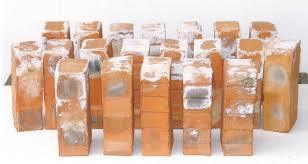
Efflorescence in brick is denoted by nil, slight, moderate, heavy, or serious as defined below:
Nil: When a salt deposit is imperceptible, then it is said to be Nil.
Slight: When efflorescence does not cover more than 10% of the exposed area of the bricks, it is said to be slight.
Moderate: When the deposit of efflorescence is heavier than slight and does not cover more than 50 percent of the exposed area of the brick surface. There should not be powder or flake on the brick-exposed surfaces.
Heavy: When the deposit covers an area of 50 percent or more of the exposed area of the brick surface. Then it is said to be efflorescence salts are heavy. There should not powder or be flaking of the brick-exposed surfaces.
Serious: efflorescence is said to be serious when there is powdering or flaking of salt on the exposed surface of bricks.
Read More: Brick Work Calculation Excel Sheet
3. Compressive Test on Brick

- For this test well brunt clay brick is selected.
- The top and bottom faces of bricks are ground to provide a smooth and even surface for the test.
- The brick sample is then placed in water at room temperature.
- Clean top flogs of brick and fills them with cement mortar (1 part cement and 1 part clean coarse sand of grade 3 mm and down), store under damp jute bags for 24 hours, and then immerse in clean water for 3 days.
- Take out the brick sample and clean the extra water from the surface.
- Place brick sample between two plywood sheets, each 3 mm thick, with flat faces horizontal and mortar-filled faces facing upwards.
- The brick sample between plywood sheets is carefully set in the center of the compression testing machine.
- Fix the gauge of the machine and tighten it and start applying the axial load at a uniform rate of 140 kg/cm2 per minute till failure.
- The maximum load on the dial gauge at the failure of the brick sample is noted.
Compressive strength = maximum load at failure/ Base are of Brick.
Read More: Soundness Test of Cement – Procedure and Results
4. Hardness Test on Brick
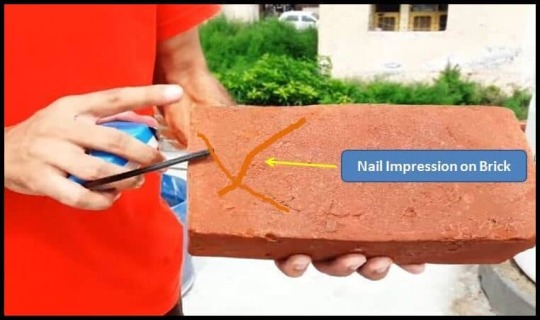
The Hardness Test of Brick can be judged with the help of the scratch of the fingernail. Try to scratch the figure on the brick, if no scratch is left on the surface of the brick, it is considered to be having sufficient hardness.
6. Shape and Size Test
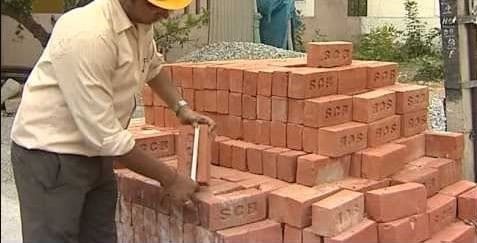
The shape of bricks should be truly rectangular and should have standard sizes per the relative code of regulation.
7. Soundness Brick Test

A soundness brick test is conducted by striking two bricks together. The striking of brick should emit a ringing sound. It can be tested by the fall of brick. A good quality brick should not break, when made to fall flat on hard ground, from a height of about 1 m.
Conclusion:
In conclusion the 7 brick test serves as a comprehensive and reliable method for evaluating the durability of brick and quality of brick, this test which include dimension, compressive strength, efflorescence, soundness, hardness, presence of soluble salts and water absorption.
By Subjecting the bricks to this rigorous examinations, engineers and builders can make informed decision regarding their usage, ensuring and the safety and longevity of structure.
FAQs:
What are fly ash bricks and red bricks?Fly ash bricks are made from a combination of fly ash (a byproduct of coal combustion) and cement, while red bricks are traditionally made from clay.Are fly ash bricks stronger than red bricks?
In terms of strength, both fly ash bricks and red bricks can be comparable, depending on their quality and manufacturing process.Which type of brick is more cost-effective?Fly ash bricks are generally more cost-effective than red bricks because fly ash is a waste material and is often available at a lower cost than clay.
You May Also Like:
- 30 Types of Bricks In Used Construction | Types of House Bricks | Jhama Bricks | Types of Bricks In India
- Standard Brick Size | Standard Size of Brick | Brick Size | Brick Dimensions Inches | Brick Size In India
- 11 Types of Brick Bonds | Flemish Bond | English Bond | Stretcher Bond | Header Bond
- Fly Ash Bricks vs Red Bricks Which is Better? | Best Bricks for House Construction | Best Bricks for Home Construction | Fly Ash Bricks Price | Fly Ash Bricks Cost
Read the full article
#.waterabsorptiontestonbricks#astmc67#brick#brickabsorptiontest#brickdroptest#brickmasonry#brickqualitystandards#brickqualitytest#bricktest#bricktestpdf#bricktestprocedurepdf#bricktesting#bricktestingmachine#bricktestingmethods#bricktolerancetest#brickwaterabsorptiontestiscode#bricks#brickspropertiesandclassifications#brickwork#civilengineeringlaboratorytests#compressivestrengthofbrickinkn/m2#compressivestrengthofbricktest#compressivestrengthofcementbrick#crushingstrengthofbrick#dimensiontestofbrick#efflorescencetestofbrick#efflorescencetestofbrickpdf#efflorescencetestonbricks#fieldtestofbrickspdf#hardnesstestofbricks
0 notes
Text
The 6 Ultimate Guide to Choosing the Right Garden Screen
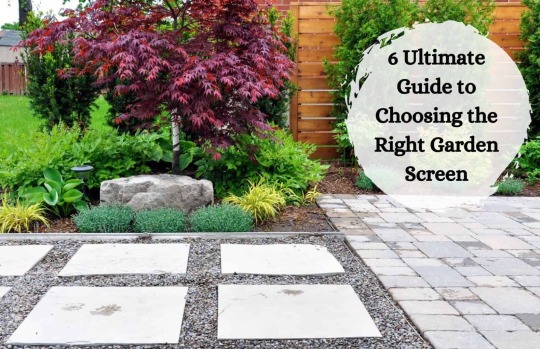
When selecting a garden screen, there are numerous factors to consider, including functionality, aesthetics, and durability. Many options are available, making the right choice for your outdoor space. In this comprehensive guide, we have curated a collection of five must-read articles that will help you navigate the process of selecting the perfect garden screen. From understanding different materials to exploring creative design ideas, this guide will equip you with the knowledge you need to make an informed decision.
Exploring Garden Screen Materials: Pros and Cons
This article dives into the various materials used in garden screening, such as wool, bamboo, and metal garden screens. It discusses the pros and cons of each material, including their durability, maintenance requirements, and aesthetic appeal. Understanding the characteristics of different materials will help you determine which one aligns best with your preferences and the specific needs of your garden.
Finding the Right Balance and Privacy
Privacy is often a primary consideration when choosing a garden screen, but balancing privacy and light is good. This article explores different screen designs and materials that offer varying degrees of privacy while allowing natural light to filter through. It also provides tips on positioning screens to maximize privacy without compromising the brightness and warmth of your outdoor space.
Designing with Style: Garden Screen Inspirations
Design plays a crucial role in enhancing the overall aesthetic of your garden. This article showcases a range of garden screen design inspirations, from intricate patterns to contemporary minimalist styles. It explores how different screen designs can complement various garden themes and architectural elements. By exploring these inspirations, you can unlock endless possibilities to elevate the visual appeal of your outdoor space.
Considerations for Weather Resistance and Longevity
Garden screens are exposed to the elements year-round, so it's essential to choose screens that are weather-resistant and long-lasting. This article delves into important considerations such as UV resistance, water resistance, and resistance to rot or corrosion. It provides insights into selecting screens that can withstand your local climate, ensuring they remain in excellent condition for years.
Installation and Maintenance Tips for Garden Screens
Once you’ve selected the perfect garden screen, proper installation and maintenance are crucial to ensure its longevity and functionality. This article offers practical tips and guidelines for installing different screens, including securing them to existing structures or creating freestanding screens. It also provides maintenance advice, such as cleaning techniques and regular inspections, to keep your screens looking their best. For example, metal garden screens are easy to install and maintain as they require less labour.
Size and Placement
Before deciding on a garden screen, consider the size and layout of your outdoor space. Measure the area where you plan to install the screen to ensure it fits properly and doesn't overwhelm or obstruct other elements in your garden. Additionally, think about the placement of the screenings in your seating areas, entrances, or areas you wish to screen off for privacy.
Choosing the right garden screen requires careful consideration of various factors, from materials and design to functionality and maintenance. Exploring the six must-read articles in this ultimate guide, you will gain valuable insights into making an informed decision. Consider the pros and cons of different materials, strike privacy and light, explore inspiring design ideas, prioritize weather resistance and longevity, and follow proper installation and maintenance guidelines. With this knowledge, you can confidently select the brand luxury screens to enhance beauty, privacy, and functionality.
You May Also Like
Read the full article
0 notes
Text
Tiles Popping Up: How To Repair Pop Up Tiles

What Is Tile Popping?
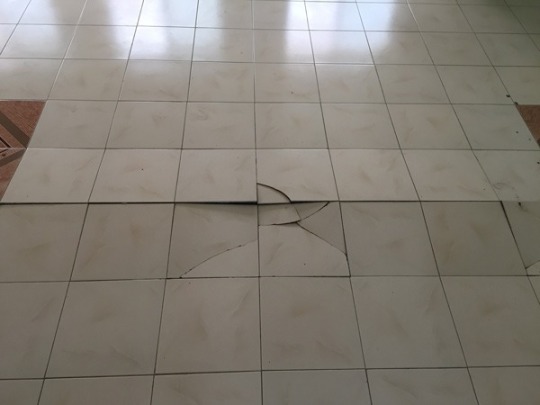
Tile Popping
Tile popping refers to a phenomenon where ceramic or porcelain tiles become loose and pop out of place, often resulting in a hollow sound when the tile is tapped. Tile popping can occur for several reasons, including improper installation, moisture damage, or an unstable subfloor.
Improper installation of tiles can cause air pockets or insufficient adhesive coverage, leading to the tile becoming dislodged from its position over time. Moisture damage can also cause the adhesive to break down, weakening the bond between the tile and the substrate.
An unstable subfloor can also cause tiles to pop due to movement or shifting, which can cause stress on the tiles and weaken the bond. Tile popping is not only a cosmetic issue, but it can also pose a safety hazard, especially if tiles pop in high-traffic areas.
Read More: Bamboo Flooring Pros and Cons | Top 5 Pros and Cons of Bamboo Flooring
How To Repair Pop Up Tiles
Floors are one of the most important parts of the house, and they will be quite inconvenient if they are broken and need to be repaired in the near future. As a result, flooring projects must be taken seriously.
However, flooring construction has begun at the end of the project. As a result, both the spirit and the resource have most likely been depleted.
For cost-cutting reasons, some people will down-spec (alter tiles and mortars to less expensive options). This is a poor decision.
The installer is another key consideration. Floor installers are one of the highest-paid workers at Sunggiardi Construction.
Before we trust workers to install floors, they must have worked as stone masons for a long time, and we will first put them to the test in the service area. We ensure that only high-quality workers perform the flooring work using this policy.
Heat and humidity are common environmental factors that affect outdoor areas.
Solution If this already happened
We have to tell you the truth: tile popping is similar to cancer. Even if you tackle the problems at the source, it has a possibility to spread once you have them. Concerning the exploding floor.

Pop Up Tile Repair
When you knock the tile next to you, it usually gives you hollow feedback. So, even if you merely replace the popping tiles, the tile popping may occur again in the area in 3-12 months.
When our clients' tiles begin to pop, we normally advise them to replace the entire floor in the region. Another problem is that there are frequently insufficient extra tiles to replace the floor. As a result, the color of the replacement floor will be different.
Notes to keep in mind while changing popping tiles
When removing your old tile, keep the following points in mind
- When removing tile, never use a sledgehammer. You run the danger of causing damage to your floor's underlying structure.
- To keep tile pieces from moving into other rooms, tape the space beneath your doors.
- To prepare for the removal job, clean the region.
- To dispose of the tiles that have been removed, use heavy-duty demo bags.
- Break apart the installed tiles with small hand hammers.
- To achieve a proper bond, make sure both the adhesive and the surface aren't dry before placing the tile.
- Make sure you're wearing the proper safety gear (eye protection, etc.).
Reason For Tile Popping
We discussed the biggest reason for tile popping was air trapped in the ground. We will discuss it and some more reasons why it occurs.
To know the solution for tile popping we need to first learn why it occurs. The reasons for tile popping are as follows:
1. The Subfloor Is not level
If you get a cheap contractor, he might put less effort into a better floor. The preparation of the flooring or also called screeding might be bad and rough. If floor installers or tilers are put into this situation.
There is a huge chance that their laziness can cause this problem. This might not be visible at the time of installation but it’s been a huge problem for a long time.
This can be only solved or prevented by making sure that the screening process is done using top-quality material and workers. The wall's plaster-like roughness is the desired roughness.
Read More: Mezzanine Floors | Types of Mezzanine Floors | Mezzanine Flooring
2. Proper cleanliness not done by the workers while installing
If the first problem is caused by workers, then this might be caused by installers. Top-quality workers have enough experience and they know that the subfloor must be cleaned properly before installing the tiles.
Either this is done by them or they seek help from other helpers to clean the subfloor. However, the worker might be in a hurry they might not put this into consideration.
Other things which can make them not put the effort into the work can be paid based on volume rather than hourly.
3. Use of bad quality adhesives or wrong mortar mixture by workers
Tiles nowadays are mostly placed with mortars (a mixture of cement and sand). The bad quality of sand or cement can cause this problem as well. Bad quality sand i.e.
lots of mud content usually increases the chances of this problem happening. The other factor can be workers using pre-mixed mortars (factory produced) which usually have the wrong water content to mix. This is totally a matter of workers' lack of experience.
4. The tile was not properly blown with a rubber hammer
When it comes to larger dimensions of tiles, there is a chance that the tiles are unevenly pressured, which creates air that will loosen the bonding when the mortar is dry.
The larger dimensions of the tiles will solve the tile popping problem because they might be too heavy to pop, but it won’t solve the problem entirely.
5. Less gap provided between tiles
This is a common problem for those who want their ceramic tile to seem like marble. On marbles, the gap appears to be very small and hidden. As a result, they wish to achieve the same thing with ceramics.
I can assure you that you can handle ceramic tiles with the same ease as marble tiles. It's two different materials, each with its own set of qualities.
Ceramics require greater space to breathe and expand/swell. A minimum of 3 mm spacing between tiles is required for homogeneous tiles. More ceramic tiles are required.
6. Weather Conditions are Unfavourable
If all of the preceding arguments are the result of human error and inexperience, there is one absolute force that cannot be avoided: the weather.
If the region of the floor is immediately exposed to sunshine, there is a risk of tile popping up because direct sunlight causes heat, which causes tiles to expand. As a result, if the adhesives are weak, the tiles may pop up and buckle.
Tiles that have been exposed to a lot of moisture are prone to popping. Because there's a chance the tiles will swell and pop up.
Let’s now move into the solution of how we can solve the problem of tile popping.
Read More: What Is PVC Flooring | Types of PVC Flooring | PVC Tiles | Plastic Flooring
Importance of Repairing Popped Tiles
The importance of repairing popped tiles lies in several key factors. Firstly, popped tiles can pose a safety hazard as they can become loose and trip people or cause injuries.
Secondly, popped tiles can also lead to water damage and other moisture-related problems, causing further damage to your flooring or walls.
Thirdly, popped tiles can also lead to a loss of aesthetic appeal, reducing the overall value and beauty of your home.
Finally, neglected popped tiles can lead to bigger, more expensive repair projects in the future, making it imperative to address the issue as soon as it arises. Repairing popped tiles is essential in maintaining the safety, durability, and appearance of your home, as well as preserving its value.
Some things to remember
- Finding a new matching replacement tile is the most difficult part of replacing a damaged tile. Hopefully, you have extra tiles from the original installation or know where to get them.
- Bring your old tile to a respected tile store to see if they have a replacement.
- To make spaces between any tiles you're removing and tiles you don't want to remove, use a utility knife to chop off any residual grout.
- Remove any attached tiles with care, being careful not to loosen the adjacent tiles.
- Clear out all of the adhesive and pieces, then dampen the wood and rub the area with a moist sponge to help it attach to the adhesive.
- Put your new adhesive to work.
- To make a firmer connection, cut notches in the adhesive.
- Make sure the tile is flat and lined up appropriately.
- Using a float, apply the grout at a slight diagonal to the grouted joint.
- Remove extra grout with a moist sponge once the grouting is complete.
- For the first 24 hours, stay away from the newly laid tile.
- With a damp sponge, wipe away the haze of grout residue, then buff it with a dry sponge.
You May Also Like:
- What Is PVC Flooring | Types of PVC Flooring | PVC Tiles | Plastic Flooring
- Bamboo Flooring Pros and Cons | Top 5 Pros and Cons of Bamboo Flooring
- Mezzanine Floors | Types of Mezzanine Floors | Mezzanine Flooring | Benefits & Uses of Mezzanine Floors
- 28 Tiling Tools Used In Flooring Work | Tools for Tiling | Tools For Tile Work
Read the full article
#appearstohavetileonway#buckledtiles#bucklingfloortiles#floortilepoppingup#floortilesbucklingup#floortilespoppingup#popuptiles#tilebuckling#tilepopping#tilepoppingup#tilespoppingoffthefloor#tilespoppingup#whatcausestiletopopup#whatcausestilestoliftup
0 notes
Text
Types of Wood: Their Uses and Applications

Wood is one of the most versatile and widely used materials in the world, with applications ranging from construction to furniture making, art and crafts, and much more. The different wood available vary in appearance, texture, strength, durability, and other characteristics, which make them suitable for different purposes.
Understanding the different wood types and their uses is essential for anyone who works with wood, whether professionally or as a hobby. In this article, we will explore some of the most popular types of wood, their unique properties, and the applications for which they are best suited.
Read More: Types of Timber Used in House Construction
Types of Wood
The following are different types of wood available in the market, each catering to specific purposes. From hardwoods to softwoods, discover the perfect material to bring your projects to life with precision and beauty.
1. Hardwood
Hardwood is a form of wood that originates from deciduous trees, which shed their leaves annually. This type of wood encompasses a wide range of species, each with distinct characteristics and applications. hardwood is known for its durability and aesthetic appeal, hardwood is often utilized in the construction of furniture, flooring, and various woodworking projects.
Popular hardwood types are oak, maple, mahogany, and cherry, among others, each prized for its unique grain patterns and color variations. Hardwood are dense and robust nature makes it resistant to wear and tear, ensuring a longer lifespan compared to softer wood varieties.
Its versatility varies to both indoor and outdoor applications, with outdoor furniture and decking benefiting from its resilience to weathering.
2. Softwood
Softwood is a wood type derived from coniferous trees, which are characterized by their needle-like leaves and cones. This wood type encompasses a diverse range of tree species such as pine, spruce, fir, and cedar. Softwoods are known for their comparatively faster growth rates, making them a readily available and cost-effective option in various industries.
While softer in comparison to hardwood, softwoods are valued for their versatility and suitability for a wide array of applications. Common uses include construction lumber, paper and pulp production, and the creation of wood-based products like plywood and particleboard.
The light color and straight grain of many softwood species contribute to a natural aesthetic that is often sought after in both interior and exterior design. Additionally, softwoods are typically more receptive to treatments like staining and painting.
Other, Detailed Types of wood are described below,
1. Akasa Wood
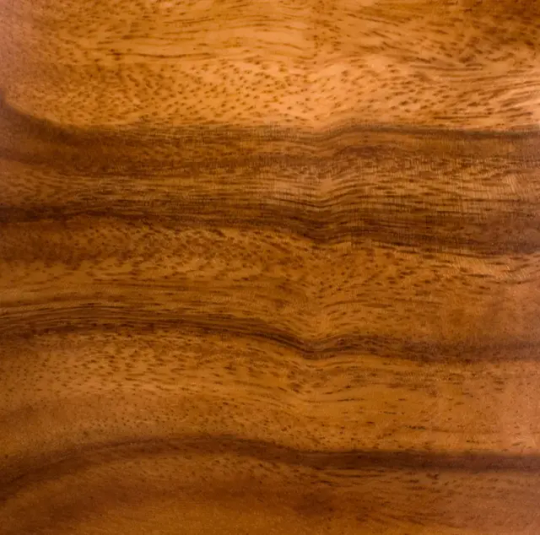
Akasa Wood
Its types of heartwood and sapwood. Which is a straight-grained grey-brown color. It is mainly utilized in interior joinery, light structural work, flooring, utility furniture, veneer for plywood, and turnery. Akasa wood variety is general utility interior wood.
Akasa Wood is a type of wood that is commonly used in traditional South Asian architecture and furniture design. It is known for its beautiful grain patterns, warm color tones, and durability, making it a popular choice for building homes, temples, and other structures in India and neighboring countries.
The exact species of wood tree name that Akasa Wood comes from is not clear, but it is believed to belong to the Hardwood group of trees.
2. Ash Wood
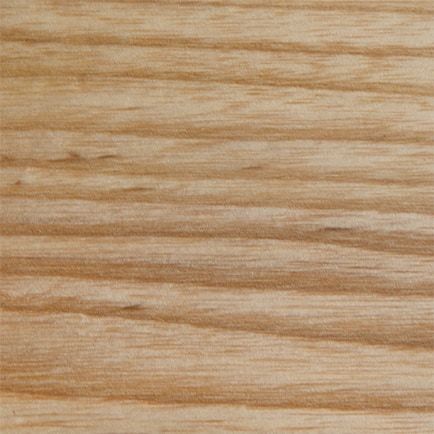
Ash Wood
Ashwood is one type of light wood and it offers distinctive luster when polished. Its structure is almost open grain and is reasonably hard-wearing.
Ash Wood is a hardwood species that is native to temperate regions of Europe, Asia, and North America. It is characterized by its light-colored wood varieties with a straight, pronounced grain pattern and medium to high density.
Ash Wood is prized for its versatility, durability, and shock resistance, making it a popular choice for furniture, flooring, sports equipment (such as baseball bats), and cabinetry. The wood is also valued for its ability to hold paint and stains well, giving it a long-lasting, attractive finish.
Ash wood fibers could be used as a component in MDF production, either alone or in combination with other wood fibers.
3. Balsa Wood

Balsa Wood
However, balsa wood is one of the softest and lightest weight timbers, it is a hardwood. Balsa is mainly used for heat, sound, and vibration insulation and for model making.
Balsa Wood is a type of fast-growing hardwood that is native to Central and South America. It is known for being the lightest commercial wood in the world, with a low density and exceptional buoyancy.
Due to its low weight, Balsa Wood is often used in a variety of applications, including modeling, kite building, surfboards, and packaging materials. It is also used as a core material in the construction of composite materials, where its lightness and strength make it ideal for use in lightweight structures.
Despite its low weight, Balsa Wood is surprisingly strong and has a good strength-to-weight ratio, making it a versatile and popular material in many industries.
4. Bamboo Wood
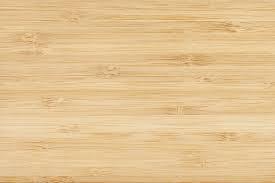
Bamboo Wood
It generally has a rich golden color that's very hard-wearing. As bamboo is impervious to moisture, it can be used in conjunction with the ornamental part of a water feature or for flooring in bathrooms, conservatories, and other wet areas.
Bamboo Wood refers to the solid and durable culms (stems) of various species of bamboo plants, which are used as a building and construction material. Bamboo is a highly renewable resource, as it grows much faster than traditional list of hardwoods and can be harvested in as little as 3-5 years.
Bamboo is often considered to be a green alternative to wood, as it is eco-friendly and has a lower carbon footprint compared to traditional hardwoods.
Bamboo Wood is used in a variety of applications, including flooring, furniture, cabinetry, and even structural applications, due to its strength and durability.
It is also used in the production of handicrafts and other decorative wood materials list items, as its unique grain patterns and light color tones make it a popular choice for aesthetics.
5. Beech Wood
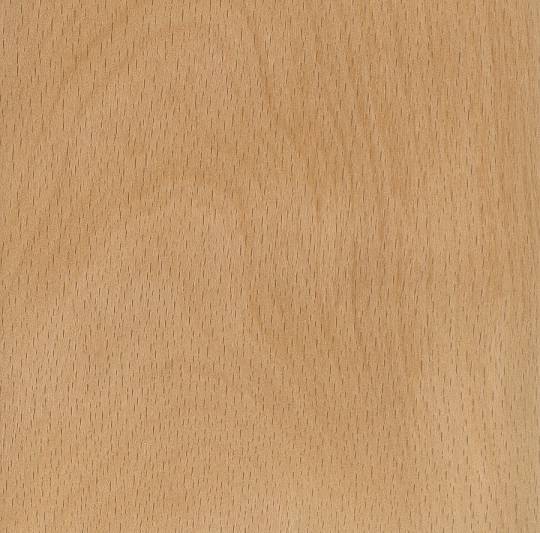
Beech Wood
Beechwood is one of the hard durable wood that is found in its natural form and comes in a variety of warm, soft honey tones. Sometimes, beech has been treated at high temperatures to create a unique red color.
Beech Wood is a type of hardwood that is native to Europe and Asia. It is characterized by its reddish-brown color and distinctive straight, fine grain pattern. Beech Wood is a dense and hard wood, with a high resistance to wear and abrasion, making it a popular choice for furniture, flooring, and cabinetry.
The wood is also known for its ability to hold fine details, making it ideal for use in moldings, carvings, and other decorative applications. In addition, Beech Wood is valued for its steam-bending properties, which make it a popular choice for the production of chairs, bentwood items, and other curved furniture pieces.
Overall, Beech Wood is a versatile and durable hardwood that is widely used in a variety of applications.
Read More: How To Remove Mold From Wood | How To Clean Mold Off Wood
6. Brazilian Mahogany Wood
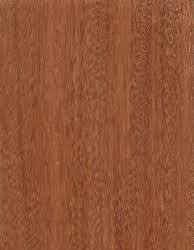
Brazilian Mahogany Wood
Brazilian Mahogany is a type of hardwood that is native to South America and commonly known as "genuine" or "true" mahogany.
It is prized for its rich reddish-brown color, fine texture, and straight grain pattern, making it a popular choice for high-end furniture, cabinetry, flooring, and millwork. Brazilian Mahogany is known for its stability, durability, and resistance to decay, making it ideal for use in outdoor and marine applications.
The wood is also favored for its workability, as it can be easily shaped, sanded, and finished to a high standard. However, due to the species' declining populations, Brazilian Mahogany has become increasingly difficult to source and is now protected by international trade laws, which limit its harvest and export.
As a result, alternative species of wood that are similar in appearance and properties are often marketed as "Brazilian Mahogany."
7. Cedar Wood
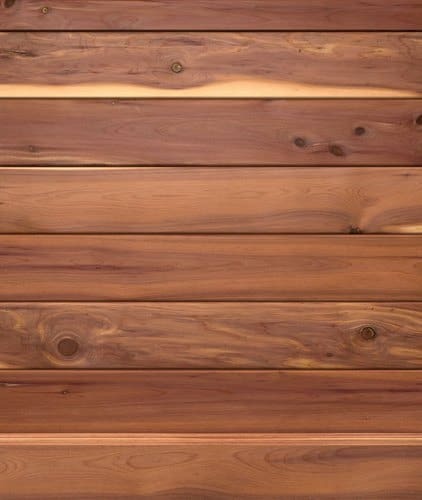
Cedar Wood
It is one of the major used lightweight softwood. It can be useful in construction work. Cedarwood is proven durable with straight gain.
Cedar Wood refers to the softwood from various species of trees in the cedar family, which are native to the Americas and some parts of the Old World. Cedar Wood is known for its distinctive reddish-brown color and fragrant aroma, as well as its natural resistance to rot, decay, and insect damage.
This makes it a popular choice for outdoor use, such as in decking, fencing, and siding, as well as for indoor use, such as in closets and chests, where it helps to protect clothing and other stored items from insects.
Cedar Wood is also prized for its attractive appearance, with a fine, uniform texture and straight grain pattern, making it a popular choice for decorative uses, such as paneling and trim work.
Due to its resistance to decay and insect damage, Cedar Wood is considered to be a sustainable and environmentally-friendly choice for many applications.
8. Celtis Wood
Celtis wood is a straight-grained but sometimes interlocked wood. It comes up with yellowish-grey heartwood and sapwood and a fine texture with a slightly lustrous look.

Celtis Wood
Celtis is a genus of deciduous trees and shrubs in the hemp family (Cannabaceae), commonly known as hackberries.
These trees are found in a variety of habitats throughout the world, including temperate and tropical regions of the Americas, Europe, Asia, and Africa. Celtis Wood is known for its durability and workability, making it a popular choice for furniture, cabinetry, flooring, and other applications.
The wood is typically light to medium in color, with a straight, fine grain pattern and a uniform texture. Due to its relatively low density and moderate weight, Celtis Wood is also used as a substitute for other, more expensive hardwoods in some applications.
However, the wood is not widely available and is not as well known as other hardwoods, such as oak or maple, making it a less common choice for many uses.
9. Conifer Wood

Conifer Wood
Wood cut out from Coniferous or cone-bearing trees is known as conifers. Generally, these trees are evergreen, the trees have needle-like leaves, and produce softwood timber. This term generally covers and includes:
Read More: Difference Between Wood and Timber | What Is Wood | What Is Timber | What Is Lumber
10. Cherry Wood
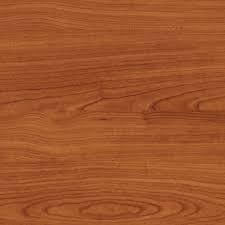
Cherry Wood
Cherry wood has the color reddish-brown and it comes up with straight-grained wood that may contain pith flecks and small gum pockets that create random patterning.
Many people believe that cherry wood is the best wood for carving because it is soft enough to be carved easily but is also hard enough to hold its shape.
Cherry wood also has a beautiful, rich color that makes it a popular choice for furniture, carvings, and other decorative items.
11. Dahoma Wood
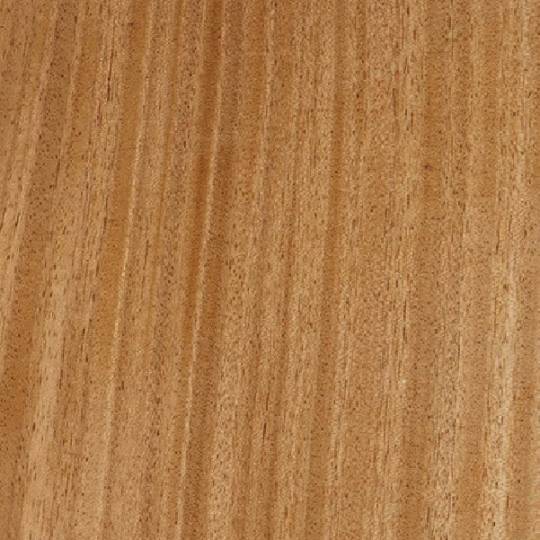
Dahoma Wood
Dahoma wood generally has coarse interlocked grain, yellowish-brown streaky heartwood, and pale sapwood. It is one of hard timber mostly for exterior use, such as exterior structural timbers, mining timbers, marine work, sleepers, outdoor furniture, decking, and so on.
12. Danta Wood
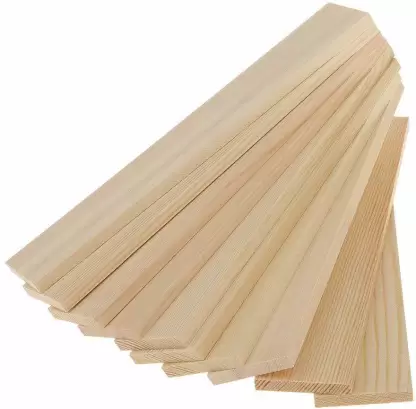
The danta wood comes up with fine grain mostly interlocked with mahogany red heartwood and lighter sapwood. It's a hard and strong wearing surface. It is mostly used for high-quality joinery, cabinetwork, benchtops, boat components, decking, and interior and exterior applications.
13. Douglas Fir Wood

Douglas Fir Wood
Douglas fir wood is grown in North America and the UK. It generally has a light reddish-brown color with softwood, used for construction, interior, and exterior joinery, and plywood. It is very strong compared to weight.
14. European Beech
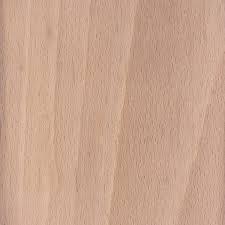
European Beech
European Beech is generally grown in Europe and is a white to pale brown color hardwood, used for furniture, interior joinery, and flooring. It can be used for plywood.
15. Elm Wood

Elm Wood
It is one of hardwood and grain similar to or even exceeding that of oak. It is found in a variety of colors and tones from cream to dark brown and its grain is equally diverse, ranging from straight to wavy. Characteristically, the elm comes up and incorporates knots and burrs.
16. Greenheart Wood

Greenheart Wood
Guyana and Suriname. It is a dense, strong and durable wood that is known for its excellent resistance to rot, decay and termites, making it a popular choice for outdoor use such as marine construction, piers, and bridges.
The wood is characterized by its distinctive green color that darkens to a deep brown over time when exposed to sunlight and air. Greenheart is a heavy wood, weighing between 700-800 kilograms per cubic meter and has a high resistance to shock and bending.
Greenheart is also a valuable timber due to its unique properties, including its strength and durability, which make it a preferred wood for use in a variety of applications, such as flooring, decks, docks, and heavy-duty construction. Additionally, Greenheart is often sought after for its ornamental value, particularly in furniture making and cabinetry.
17. Iroko Wood
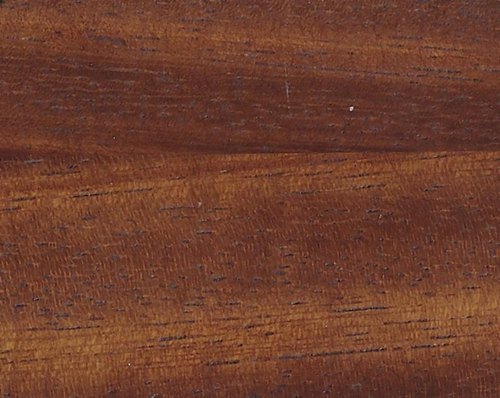
Iroko Wood
Iroko wood trees mostly grew in West Africa. It has the color yellow-brown hardwood with a grain that's irregular and interlocked.
Iroko wood is mostly utilized for interior and exterior joinery and for construction work. A cheaper alternative to teak.
18. Khaya Wood
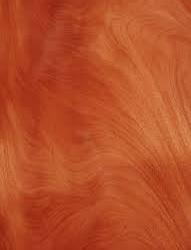
Khaya Wood
Khaya is a type of hardwood that is commonly known as African Mahogany and is native to the tropical rainforests of West and Central Africa. It is a prized wood species due to its beauty, strength, and stability, making it a popular choice for a wide range of applications.
The wood is known for its distinctive reddish-brown color, which can range from a light pinkish-brown to a dark red-brown, and has a fine, uniform texture with a straight grain pattern. Khaya is a relatively lightweight wood, with a density of around 550 kilograms per cubic meter, and is known for its good workability, making it easy to saw, plane, and sand.
Khaya is widely used in the furniture and cabinetry industries, where it is prized for its attractive appearance and durability. The wood is also commonly used for interior trim, doors, flooring, and veneers, as well as for the construction of musical instruments such as guitar and drums.
Additionally, Khaya is a popular wood for outdoor use due to its resistance to rot and decay, making it a good choice for decks, pergolas, and outdoor furniture.
19. Ligneous Wood

Ligneous Wood
The ligneous wood materials are bagasse, bamboo, cereal straw, and flax or hemp shives.
"Ligneous" is an adjective used to describe wood-like or woody properties, but it is not a specific type of wood. The term is used to describe materials that have properties similar to wood, such as hardness, strength, and rigidity.
20. Maple Wood

Maple Wood
It is generally straight-grained and is characterized by irregular patterning, which can include fiddle back and bird's eye patterns.
It comes up with light brown heartwood color and thin white sapwood that can be tinged with reddish-brown.
Maple wood is very strong, heavy, and has a high resistance to knocks. After being stained, it has a light, almost translucent appearance. maple is found in Canada and is one of the hardest species.
Read More: How to Remove Stain from Wood (Best 9 DIY Tips & Tricks)
21. Meranti Wood

Meranti Wood
This is a mixed-species grouping of the Shorea genus that's grown in South East Asia.
Read the full article
#advantagesofwood#AkasaWood#alltypesofwood#AshWood#BalsaWood#BambooWood#BeechWood#bestwoodforfurnitureinindia#BrazilianmahoganyWood#CedarWood#CeltisWood#CherryWood#ConiferWood#DahomaWood#DantaWood#dentifyingwoodtypespictures#differenttypesofplywood#differenttypesofwood#differenttypesofwoodforfurniture#DouglasfirWood#ElmWood#European#EuropeanbeechWood#EuropeanWood#GreenheartWood#importanceofwood#IrokoWood#KhayaWood#kindsofwood#LigneousWood
0 notes
Text
Water Leaking From Ceiling | How to Stop Water Leakage From Ceiling | Ceiling Leak

What Is Water Leakage From Ceiling?
Water Leaking from the Ceiling is a common defect in the house ceiling area. Generally, when water leaks through the ceiling area of the roof is known as a Ceiling Water Leakage.
Ceiling leak majorly occurs due to long-term wear and tear of the waterproof membrane or screed in the slab above. Ceiling leaks are a very common problem in old houses and mostly occur in bathrooms and toilets.
Detecting the cause or source might be challenging for leaks that originate from the roof. It is a difficult task because water can penetrate from one and flow through the slab before it starts penetrating into the walls and floors.
Ceiling water leak, if this defect is left untreated it can lead to severe outcomes including flooding, staining, wall collapse, and damage go to goods and property.

If there is water leaking from the ceiling in your house, most of the time leak is caused by the direct floor above. To solve this problem you have to carry out waterproofing repair and maintenance work.
In addition, extra moisture that results from the ceiling leak can lead to mold formation that produces breathing problems that attack the health of the occupants.
Leaking in the bathroom ceiling also poses a safety hazard if water enters the electrical fittings. In such a case better to remove electrical appliances and cover up and socket that you suspect might be affected by the leak to avoid electrocutions.
Read More: Paint Smell In House ? 8 Quick Remedies To Remove It.
Signs of Water Leaking From Ceiling
If there is some discoloration, sagging plaster, or dripping water from your ceiling, it might be pointing to signs of a direct ceiling leak. However, this may be happening because of defective plumbing systems or roofing issues in the first place that is causing the leaks.

Water leaks from the ceiling or any other visible sign of water damage either on the drywall or plaster should not be taken lightly. Typical, there is the possibility of more water storage in defective are than that is visible to the eye, which might lead to structural damage.
Sometimes, water leaks from a vent in the ceiling area of your house,
In case of visible leakage means that it is time to look for the source. Try to find the source of the problem way before the ceiling has suffered substantial damage.
If the sign of a water leak on your ceiling is relatively clean, it could be the result of plumbing issues that are causing the leaking.
In the case of water, the leak appears to be dirty and stained appearance, it could likely be damage to the waterproofing system that requires ceiling leak repair.
Typical Signs of Water Leaking From Ceiling Area
- Spots of water on the ceiling. Clear evidence that you have a water seepage problem, most likely coming from the floor above.
- Cracks or bubbling paint on ceiling surface. An indication of a level of water damage that requires further assessment and action from waterproofing experts.
- Buckling inwards of the ceiling. This could be caused by a huge build-up of water and requires immediate action before further damage takes place.
Read More: Best Way To Get Stains Out Of The Carpet (Homemade Tips 2020)
Finding the Source of Leak
The most important step to getting your water leakage problem resolved is to identify the source of the water.
There may be a number of sources of water intrusion, for example, a damaged waterproofing system above the seepage area, leaking plumbing or sanitary equipment, roof water leakage, etc.
Each source of water penetration shows distinct characteristics and you may find some of the symptoms that we are about to discuss below helpful.
1. Damaged Waterproofing System
If your seepage or leak happens very slowly, with the rate of dripping around every 3 seconds interval, it could be due to a damaged waterproofing system upstairs. Other common symptoms include multiple areas of dripping as well as an occasional leak.
2. Plumbing or Sanitary Fittings
Problems with the plumbing pipes or fixtures are also a potential source of water damage or ceiling leaks. If there is visible water damage below areas where pipes are located, there is a good chance that the problem could lie with the pipes.
The water leaking is often clear water if it is due to faulty plumbing issues. The rate of leaking is also usually quite steady – it could also be leaking profusely due to drain pipe problems.
3. Roof Water Leakage
Leakages in roofs are almost caused by rainwater. The leakages usually happen during or after rains and are more severe during downpours. However, it is difficult to trace the root of the problem as the roof has multiple components that could be managed. A thorough assessment and regular maintenance of the roof are highly recommended.
How to Stop Water Leakage From Ceiling
Should you suspect that you may have ceiling leak problems, you should engage a ceiling leak specialist to provide professional assessment and repairs in order to find a long-term solution.
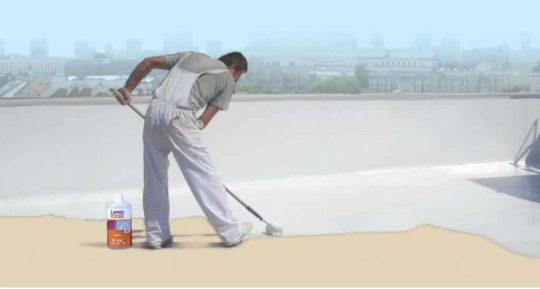
Effective ceiling waterproofing and leak repair play a critical role in protecting residential, commercial, and industrial properties and goods from damage caused by water infiltration.
Our team will usually carry out a site assessment to trace the leakage to its root cause before recommending the most effective treatment.
Our range of services also includes concrete ceiling waterproofing, which involves a rigid method to achieve water resistance, an effective way to waterproof internal spaces.
water leaking from ceiling under bathroom. Signs of any water infiltration in a basement, shower, the bathroom may point to a much more serious underlying problem if left unchecked.
Contact us for professional assistance as our team is experienced in quickly locating and repairing the source of the leak.
We know the common and not so common areas of leakage and with the assistance of leak detection equipment, we can quickly and easily locate and fix your frustrating leaks.
FAQs:
What causes water leakage from ceilings?Water leakage from ceilings can be caused by several factors, including damaged or aging roof, clogged gutters or downspouts, plumbing leaks, condensation, or improper sealing around fixtures or vents.How can I stop water leakage from my ceiling?
The best way to stop water leakage from your ceiling is to identify and address the root cause of the problem. This may involve repairing a damaged roof, clearing clogged gutters, fixing plumbing leaks, improving ventilation, or sealing around fixtures or ventsHow can I prevent water leakage from my ceiling?
Regular maintenance of your roof, gutters, plumbing, and ventilation systems can help prevent water leakage from your ceiling. This includes regular inspections, cleaning, and repairs as needed. It is also important to monitor the humidity levels in your home and use a dehumidifier if necessary to prevent condensation and moisture buildup.
You May Also Like:
- 17 Tips For How To Reduce Construction Cost
- 25 + Types Of Doors For Your Perfect Hous
- What Is Curing Of Concrete And Different Methods Of Curing
Read the full article
#bulgingceilingwaterleak#ceilingisdrippingwater#ceilingleakage#ceilingleakagesolution#ceilingleakingwaterapartment#ceilingleakingwaterbelowbathroom#ceilingleakingwaterinapartment#ceilingleakingwaterwhenitrains#ceilingwaterdripping#ceilingwaterleakageproblem#ceilingwaterleakagesolution#ceilingwaterleaks#dreamofwaterleakingfromceiling#hdbceilingleak#hdbceilingleakrepaircost#howtofixceilingwaterleak#howtosolveceilingwaterleakageproblem#howtostopwaterleakagefromceiling#howtostopwaterleakagefromceilingindia#leakcomingthroughconcreteceiling#leakinceilingfromupstairsshower#Waterleakage#waterleakagefromceiling#waterleakagefromceilingsolution#waterleakageinceiling#waterleakageonceiling#waterleakagethroughceiling#waterleakingfromceiling#waterleakingfromceilingapartment#WATERLEAKINGFROMCEILINGCAUSES
0 notes
Text
Tiles Popping Up: Reasons and Repair Solutions

What Is Tile Popping?
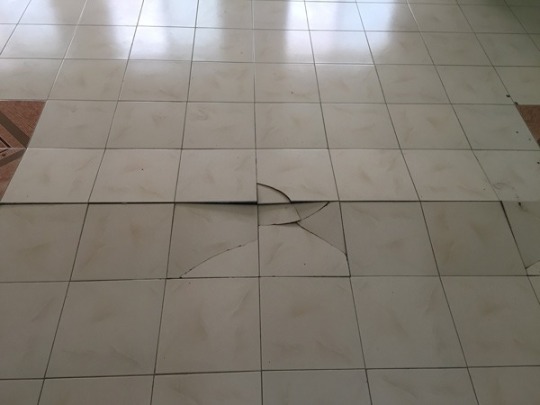
Tile popping refers to a phenomenon where ceramic or porcelain tiles become loose and pop out of place, often resulting in a hollow sound when the tile is tapped.
Tile popping can occur for several reasons, including improper installation, moisture damage, or an unstable subfloor.
Improper installation of tiles can cause air pockets or insufficient adhesive coverage, leading to the tile becoming dislodged from its position over time.
Moisture damage can also cause the adhesive to break down, weakening the bond between the tile and the substrate.
An unstable subfloor can also cause tiles to pop due to movement or shifting, which can cause stress on the tiles and weaken the bond.
Tile popping is not only a cosmetic issue, but it can also pose a safety hazard, especially if tiles pop in high-traffic areas.
It is recommended to address tile popping as soon as it is noticed to prevent further damage and ensure a safe living environment.
A professional contractor or installer can assess the cause of tile popping and recommend the appropriate solutions, which may include repairing or replacing the affected tiles, addressing moisture issues, or stabilizing the subfloor.
Read More: Bamboo Flooring Pros and Cons | Top 5 Pros and Cons of Bamboo Flooring
Reason For Tile Popping
We discussed the biggest reason for tile popping was air trapped in the ground. We will discuss it and some more reasons why it occurs.
To know the solution for tile popping we need to first learn why it occurs. The reasons for tile popping are as follows:
1. The Subfloor Is not level
If you get a cheap contractor, he might put less effort into a better floor. The preparation of the flooring or also called screeding might be bad and rough. If floor installers or tilers are put into this situation.
There is a huge chance that their laziness can cause this problem. This might not be visible at the time of installation but it’s been a huge problem for a long time.
This can be only solved or prevented by making sure that the screening process is done using top-quality material and workers. The wall's plaster-like roughness is the desired roughness.
Read More: Mezzanine Floors | Types of Mezzanine Floors | Mezzanine Flooring
2. Proper cleanliness not done by the workers while installing
If the first problem is caused by workers, then this might be caused by installers. Top-quality workers have enough experience and they know that the subfloor must be cleaned properly before installing the tiles.
Either this is done by them or they seek help from other helpers to clean the subfloor. However, the worker might be in a hurry they might not put this into consideration.
Other things which can make them not put the effort into the work can be paid based on volume rather than hourly.
3. Use of bad quality adhesives or wrong mortar mixture by workers
Tiles nowadays are mostly placed with mortars (a mixture of cement and sand). The bad quality of sand or cement can cause this problem as well. Bad quality sand i.e.
lots of mud content usually increases the chances of this problem happening. The other factor can be workers using pre-mixed mortars (factory produced) which usually have the wrong water content to mix. This is totally a matter of workers' lack of experience.
4. The tile was not properly blown with a rubber hammer
When it comes to larger dimensions of tiles, there is a chance that the tiles are unevenly pressured, which creates air that will loosen the bonding when the mortar is dry.
The larger dimensions of the tiles will solve the tile popping problem because they might be too heavy to pop, but it won’t solve the problem entirely.
5. Less gap provided between tiles
This is a common problem for those who want their ceramic tile to seem like marble. On marbles, the gap appears to be very small and hidden. As a result, they wish to achieve the same thing with ceramics.
I can assure you that you can handle ceramic tiles with the same ease as marble tiles. It's two different materials, each with its own set of qualities.
Ceramics require greater space to breathe and expand/swell. A minimum of 3 mm spacing between tiles is required for homogeneous tiles. More ceramic tiles are required.
6. Weather Conditions are Unfavourable
If all of the preceding arguments are the result of human error and inexperience, there is one absolute force that cannot be avoided: the weather.
If the region of the floor is immediately exposed to sunshine, there is a risk of tile popping up because direct sunlight causes heat, which causes tiles to expand. As a result, if the adhesives are weak, the tiles may pop up and buckle.
Tiles that have been exposed to a lot of moisture are prone to popping. Because there's a chance the tiles will swell and pop up.
Let’s now move into the solution of how we can solve the problem of tile popping.
Read More: What Is PVC Flooring | Types of PVC Flooring | PVC Tiles | Plastic Flooring
Importance of Repairing Popped Tiles
The importance of repairing popped tiles lies in several key factors. Firstly, popped tiles can pose a safety hazard as they can become loose and trip people or cause injuries.
Secondly, popped tiles can also lead to water damage and other moisture-related problems, causing further damage to your flooring or walls.
Thirdly, popped tiles can also lead to a loss of aesthetic appeal, reducing the overall value and beauty of your home.
Finally, neglected popped tiles can lead to bigger, more expensive repair projects in the future, making it imperative to address the issue as soon as it arises. Repairing popped tiles is essential in maintaining the safety, durability, and appearance of your home, as well as preserving its value.
How to repair pop-up tiles
Floors are one of the most important parts of the house, and they will be quite inconvenient if they are broken and need to be repaired in the near future. As a result, flooring projects must be taken seriously.
However, flooring construction has begun at the end of the project. As a result, both the spirit and the resource have most likely been depleted.
For cost-cutting reasons, some people will down-spec (alter tiles and mortars to less expensive options). This is a poor decision.
The installer is another key consideration. Floor installers are one of the highest-paid workers at Sunggiardi Construction.
Before we trust workers to install floors, they must have worked as stone masons for a long time, and we will first put them to the test in the service area. We ensure that only high-quality workers perform the flooring work using this policy.
Heat and humidity are common environmental factors that affect outdoor areas.
Solution If this already happened
We have to tell you the truth: tile popping is similar to cancer. Even if you tackle the problems at the source, it has a possibility to spread once you have them. Concerning the exploding floor.

When you knock the tile next to you, it usually gives you hollow feedback. So, even if you merely replace the popping tiles, the tile popping may occur again in the area in 3-12 months.
When our clients' tiles begin to pop, we normally advise them to replace the entire floor in the region. Another problem is that there are frequently insufficient extra tiles to replace the floor. As a result, the color of the replacement floor will be different.
Notes to keep in mind while changing popping tiles
When removing your old tile, keep the following points in mind
- When removing tile, never use a sledgehammer. You run the danger of causing damage to your floor's underlying structure.
- To keep tile pieces from moving into other rooms, tape the space beneath your doors.
- To prepare for the removal job, clean the region.
- To dispose of the tiles that have been removed, use heavy-duty demo bags.
- Break apart the installed tiles with small hand hammers.
- To achieve a proper bond, make sure both the adhesive and the surface aren't dry before placing the tile.
- Make sure you're wearing the proper safety gear (eye protection, etc.).
Some things to remember
- Finding a new matching replacement tile is the most difficult part of replacing a damaged tile. Hopefully, you have extra tiles from the original installation or know where to get them.
- Bring your old tile to a respected tile store to see if they have a replacement.
- To make spaces between any tiles you're removing and tiles you don't want to remove, use a utility knife to chop off any residual grout.
- Remove any attached tiles with care, being careful not to loosen the adjacent tiles.
- Clear out all of the adhesive and pieces, then dampen the wood and rub the area with a moist sponge to help it attach to the adhesive.
- Put your new adhesive to work.
- To make a firmer connection, cut notches in the adhesive.
- Make sure the tile is flat and lined up appropriately.
- Using a float, apply the grout at a slight diagonal to the grouted joint.
- Remove extra grout with a moist sponge once the grouting is complete.
- For the first 24 hours, stay away from the newly laid tile.
- With a damp sponge, wipe away the haze of grout residue, then buff it with a dry sponge.
Advantages of tiles flooring
Durability
When it comes to stains and damage, tile is incredibly durable. Tile is an excellent choice for high-traffic kinds of areas.
It doesn't have a lot of impact resistance, so if you drop something heavy on the tile, it'll crack just like anything else.
Low Intensity
The tile requires little maintenance because it is so long-lasting. They'll have to be cleaned just like any other dirty surface in your home.
Once every 4-5 years, you should apply a sealer to your tile. Apart from that, there isn't much to be concerned about when it comes to keeping your tiles in good condition.
Affordability
Ceramic tiles are inexpensive, making them one of the most cost-effective flooring options. When you consider the initial cost of purchasing and installing tiles, as well as their durability and lack of costly upkeep, it's evident that tiles are well worth the investment. Of course, the sort of tile you use makes a difference: there are more expensive and high-end tiles available.
Resistant to Water
Ceramic tiles have a glazed protective layer on their surface that prevents stain penetration and water damage. This is why tile is so popular for bathroom flooring. They're also inherently resistant to moisture, making them perfect for use in humid or hot environments.
Eco friendly
Raw materials such as glass, sand, and clay are commonly used to create Eco-Friendly Tiles. Ceramic tiles are frequently made using these elements in combination with other recycled materials.
They can also have a direct impact on your personal environment: they can lower your heating bills by acting as insulation, keeping your home cool in the summer and warm in the winter.
Value at Resale
Installing tile in your home can also prove to be cost-effective in the long term if you plan to sell your home. There have been numerous instances where installing a tile floor raised a home's market value significantly. A beautiful tile floor could increase the value of your property by thousands of dollars.
The State of the Air
Tiles are burnt at extremely high temperatures in kilns, resulting in the absence of volatile organic components. This is critical because VOCs are linked to a variety of health issues.
Although some other types of flooring (such as vinyl and carpet) emit minimal levels of VOCs, none can compete with tiles on a toe-to-toe basis.
Conclusion
In conclusion, tile popping can be a frustrating and potentially dangerous problem that affects the aesthetic and safety of a home or building.
Whether it's caused by improper installation, moisture damage, or an unstable subfloor, it's important to address tile popping as soon as it's noticed to prevent further damage and ensure the safety of occupants.
Consulting with a professional contractor or installer can help diagnose the cause of tile popping and recommend the best course of action to repair or replace affected tiles, address underlying issues, and prevent future occurrences.
With proper care and maintenance, homeowners and building managers can ensure that their tile floors remain in good condition and provide a safe and beautiful space for years to come.
FAQs
What do you mean by Tile popping?Tile popping is the phenomenon where the floor tiles pop out, break or bend and causing unevenness in the floor. Nowadays, most houses consist of floor tiles instead of concrete or marble. What causes tile popping?Tile popping can be caused by several factors, including improper installation, moisture damage, and an unstable subfloor. These issues can weaken the bond between the tile and the substrate, causing the tile to become loose and eventually pop out of place.
Is tile popping a serious issue?While tile popping may seem like a minor cosmetic issue, it can pose a safety hazard, especially if tiles pop in high-traffic areas. Additionally, tile popping can indicate underlying issues such as moisture damage or an unstable subfloor that can lead to further problems if left unaddressed.
How can I prevent tile popping?To prevent tile popping, it's important to ensure that tiles are installed properly and that the subfloor is stable and free from moisture damage. Regular maintenance, including cleaning and sealing, can also help prevent tile popping from occurring.
You May Also Like:
- What Is PVC Flooring | Types of PVC Flooring | PVC Tiles | Plastic Flooring
- Bamboo Flooring Pros and Cons | Top 5 Pros and Cons of Bamboo Flooring
- Mezzanine Floors | Types of Mezzanine Floors | Mezzanine Flooring | Benefits & Uses of Mezzanine Floors
- 28 Tiling Tools Used In Flooring Work | Tools for Tiling | Tools For Tile Work
- What Is a Mud Flooring? How to Prepare Mud Floor, Advantages & Disadvantages
- What Is Resilient Flooring | Resilient Flooring Types | Resilient Floor Coverings
- What Is Flooring | 10 Types of Flooring | Best Flooring for House In India
Read the full article
#appearstohavetileonway#buckledtiles#bucklingfloortiles#floortilepoppingup#floortilesbucklingup#floortilespoppingup#popuptiles#tilebuckling#tilepopping#tilepoppingup#tilespoppingoffthefloor#tilespoppingup#whatcausestiletopopup#whatcausestilestoliftup
0 notes
Text
Septic Tank: Understanding How It Works, Working Process, Pros, and Cons

What Is Septic Tank?
A Septic tank is an underwater sand basin construction utilized for dealing with the wastewater through biological decomposition and drainage procedures. It is system has a very easy structure.
It is an underground watertight compartment made of fiberglass, plastic, or concrete. The septic tank system is a simple type of onsite sewage treatment plant (OSSF) that provides only main cleaning.
Septic tanks and their helping parts are fixed underground. Usually, they are inducted at least ten feet away from the household for protection reasons. They also must be positioned far enough from springs, so users don’t risk drinking water contamination.
A tank is an outstanding form of primary sedimentation tank with a higher detention period of approx 12 to 36 hours against the duration of 2 hours in an ordinary sedimentation tank, in which digestion of settled sludge also takes place.
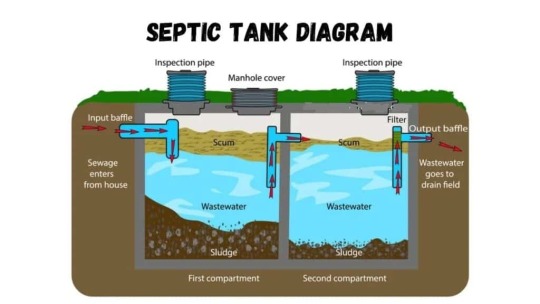
In other words, a septic tank is a joint sedimentation cum digestion tank. The septic tank has a larger capability than an ordinary primary sedimentation tank, to adjust and hold the settled sludge for its subsequent digestion.
The digestion of settled sludge is held up out of an anaerobic decomposition procedure giving growth to a septic condition, therefore this component is known as a septic tank.
Also, due to the anaerobic decomposition of the settled sludge, foul gases will be developed in the tank, and as such a septic tank will be a covered tank, It is provided with a tall vent shaft for the release of foul gases.
The sludge settled at the underside of the tank, and the oils and greasy matter increasing to the top surface of sewage as scum, are allowed to remain in the tank for 7 months, during which they are decomposed by the anaerobic bacteria to form gases and liquids by the process of sludge digestion.
The digested sludge from the tank is periodically removed approx at periods of 6 to 12 months and removed.
Read More: Septic Tank Design | Septic Tank Construction | Septic Tank Details | Septic Tank Design Example
Suitability Under the Following Condition
- In areas where sewers have not been spread.
- Removal of sewage from isolated communities, schools, hospitals, other public institutions, etc.
- Soil is relatively porous and disposal of sewage by percolation into the ground is possible.
Construction Details of Septic Tank
Fig shows the details of a septic tank. The tank may be designed of brick masonry, stone masonry, or concrete.

They are provided with a waterproof cover, along with a ventilation pipe projecting at least 2 m above the top of the building.
The tank is constructed to prevent direct currents between the tank inlet and outlet. This ensures productive sedimentation and is achieved by using tees with submerged ends as inlets and outlets.
An alternate arrangement is to provide hanging baffles in front of the inlet and before the outlet. The t-pipe or baffle at the outlet will also assist in maintaining the scum.
The floor of the tank should be of cement concrete and slope forwards to the sludge outlet. The sludge deposited and digested is removed at a duration of 6 to 12 months into a side sump well.
How Does Septic Tank Work?
A septic tank absorbs organic matter and separates suspended floatable matter like oils or grease and solids from wastewater. It is designed with two pipes which know as inlet pipe and outlet pipe.
The inlet pipe is used to transport wastewater from the house and gather it to the septic tank. It is kept here long sufficiently so that the solid and liquid waste is divided from each other.
The outlet pipe is also called the drain field or drainage station. This pipe moves out the pre-processed wastewater from the septic tank and sprinkles it evenly in the soil and watercourses.
When wastewater has been obtained after a while it will begin to, segregate into 3 layers. The topmost layer is oil or grease, and it floats above all the waste. This is commonly correlated with scum.
The middle layer includes wastewater along with waste particles. The third and bottom layer contains particles that are heavier than water and form a layer of sludge.
Bacteria inside the tank do their best to break down the solid waste, which then allows liquids to segregate and drain out effortlessly. Bacteria prepare a septic tank system work.
They break down the waste removing the water clean enough to safely percolate down into the earth. The whole is manufactured to keep bacteria healthy and busy some live in the tank, but most do work there in the drain field.
What is remain at the bottom of the tank is what needs to be occasionally removed as part of common maintenance. This is one of the explanations why a septic tank is only a basic form of sewage treatment.
Read More: What Is A Manhole | Purpose of Manhole | Types of Manholes | Manhole Construction Details
Septic Tank System
Water from the user’s kitchen, bathroom, basins, etc runs through one main drainage pipe directing to your septic tank. Underground the septic tank begins the process of carrying the wastewater. It needs to carry this long enough so the solids calm down to the bottom, while oil and grease to the top of the surface.
After this procedure, the liquid wastewater will then be eligible to exit the tank into the drain field. This wastewater is released through pipes onto permeable surfaces. These allow wastewater to filter throughout the soil.
The soil approves treats and disperses wastewater as it percolates Into the soil, finally discharging to groundwater. Finally, the wastewater percolates into the soil, naturally eliminating toxic coliform bacteria, viruses, and nutrients.
Uses of Septic Tank
Water flowing from your house is often polluted, bringing it unsafe to drink or handle. Bathing, kitchen work, and laundry work are also dirty water. Septic tanks utilize natural and mechanical processes to deal with wastewater that passes through the system.
It doesn’t matter where it eliminates undesirable solids and organic matter before returning water to the ground. That’s where your septic system comes in. septic system treats wastewater when the city sewer system is not available for use.
Precautions
A well-designed and properly installed septic tank system can last for decades or fail in just a few years. It is up to users how long they use the septic tank.
Maintaining a healthful septic tank system is not all that costly but users could easily spend tens of thousands to dice up and renovate a septic tank system that has failed. Good maintenance starts with knowing how a septic tank system work and how it can fail.
A septic tank system was properly constructed and launched needing only periodic ‘pumping’ to remove the sludge from the tank. But without understanding how a septic tank works users sometimes create errors and then the system fails or is damaged.
Users need septic tanks must be pumped out regularly from time to time by pumping equipment. Pumping removes the buildup of sludge and scum, which slow down bacterial action in the tank. Regular assessment and pumping are hard so the user can check the sludge level itself with a device called the sludge judge.
Read More: Types Of Gutters | 22 Different Types of Gutters | Rain Gutter Downspout | Best Types of Rain Gutter For House
Advantages
- Do not require qualified supervision.
- The sludge percentage to be removed is very less compared to that in a normal sedimentation tank. The removal in sludge volume is about 60% and the weight reduction is about 30%.
- The cost is very small and within the reach of private householders.
- There are no moving parts in its system.
- The effluent can be disposed of without much trouble.
- They are best suited for private rural areas, hospitals.
- It can behold, etc.
Disadvantages
- The size required is huge and uneconomical.
- Their functioning and action are erratic.
- The effluent is ao dark and foul-smelling with huge biological oxygen demand.
- The leakage of gases from the top causes a bad smell and environmental pollution.
- Regular cleaning, removal, and disposal of sludge are often boring.
FAQs
What do you mean by Septic Tank?A Septic tank is an underwater sand basin construction utilized for dealing with the wastewater through biological decomposition and drainage procedures. It is system has a very easy structure. How does the septic tank Work?A septic tank absorbs organic matter and separates suspended floatable matter like oils or grease and solids from wastewater. It is designed with two pipes which know as inlet pipe and outlet pipe.What are the Advantages of using a Septic Tank?It can be constructed easily.
Do not require qualified supervision.
The sludge percentage to be removed is very less compared to that in a normal sedimentation tank. The removal in sludge volume is about 60% and the weight reduction is about 30%.
The cost is very small and within the reach of private householders.
There are no moving parts for its system.
The effluent can be disposed of without much trouble.
They are best suited for private rural areas, hospitals, schools, etc.
You May Also Like
- Septic Tank Design | Septic Tank Construction | Septic Tank Details | Septic Tank Design Example | Septic Tank Design For Home
- What Is A Manhole | Purpose of Manhole | Types of Manholes | Manhole Construction Details
- Types Of Gutters | 22 Different Types of Gutters | Rain Gutter Downspout | Best Types of Rain Gutter For House
- Soak Pit | Soakage Pit | Soak Pit Design | Soak Pit Meaning | Leach Pit | Advantages & Disadvantages of Soak Pit
- Plumbing Trap | 14 Plumbing Trap Types | Types of Traps In Plumbing | Gully Trap | Types of Drain Traps | Different Types of Traps
Read the full article
#diagramofaseptictanksystem#houseseptictank#howdoesseptictankwork#septictankfortoilet#septictankprocess#septictanktoilet#septictankunderground#toiletseptictank#toiletwithseptictank#whatareseptictanks#whatisaseptic#whatisasepticsystem#whatisaseptictank#whatisaseptictankusedfor#whatisseptictank#what'saseptictank#whatsaseptictank
0 notes
Text
Plumbing Precision: The Advantages of Using Recessed Valve Boxes for a Neat and Efficient System

Businesses must have an efficient plumbing system to keep the water clean and effectively manage the wastewater in homes and business establishments. These systems have several potential problems that they need to avoid, including leaking pipes and water contamination. If this happens, it will expose the properties to structural damage and the people inside to health risks.
It is paramount to protect these systems from damage to prevent any issues in the future that can wreak havoc on houses and commercial spaces. One way to keep them organized and efficient is through recessed valve boxes.
15 Advantages of Using Recessed Valve Boxes
Recessed valve boxes such as the BA-ARVB recessed valve box are specialized containers that help your plumbing system hold valves and parts and protect them from weather and dirt. Here are the key advantages of installing these boxes.
1. Hides Plumbing Components
The recessed valve boxes can efficiently suppress the plumbing system behind the wall without the need to cover the wall in full concrete. This allows for a clean, minimalist look without exposed pipes or valves marring the walls. The valve boxes keep all plumbing neatly tucked away and out of sight.
2. Quick Maintenance and Repair
It is an easy-open access door with sturdy hinges, allowing authorized personnel to open it quickly and reach the plumbing components for maintenance and repair.
Also, with these access doors, you do not need to tear down an entire wall to fix the plumbing system.
3. Neat and Organized Appearance
The recessed structure of the valve boxes provides a sleek and neat appearance that goes well with the building's interior design. The boxes create a flush, seamless look as they recess into walls, giving an orderly aesthetic to the area where they’ll be placed.
4. Ease of Installation
Unlike heavy-duty access doors requiring special equipment, the recessed valve boxes only need the basic access door installation kit.
The installation process is also simple, and you can easily follow the guide that comes with it.
Though most of them are for wall installation only, there are other valve boxes that you can install on floors and ceilings. Their versatility ensures that they meet your building's specific needs.
5. Highly Durable Materials
Most recessed valve boxes use aluminum and steel, ensuring the valve remains reliable for years. Aluminum and steel are known for resisting corrosion, which helps extend the access door's longevity. The stronger the materials are, the more efficient these boxes become.
6. Protects from Environmental Elements
Recessed valve boxes serve as an extra layer of protection for your plumbing system. They prevent different weather conditions, debris, dirt, and rodents from damaging the plumbing components.
In colder climates, recessed valve boxes are an extra protection layer that prevents the components from freezing.
7. Space Efficiency
When installed, the recessed valve boxes level on the installation surface, saving more space for other components and making them ideal for areas with limited space. Sometimes, you can also use them as an extra storage box for items. The compact design maximizes usable room area.
8. Enhanced Safety
It encloses valves and important plumbing components to prevent unauthorized access. The added safety is essential in commercial buildings to avoid disrupting business hours. It is also crucial in homes, especially when children living inside the house may accidentally reach the unprotected parts.
9. Perfectly Fits Openings
Another advantage of the recessed valve boxes is their customizability. It allows you to customize the access door's size and the valve box’s depth according to its application surface and opening.
10. Blends Perfectly to Design
Most recessed access doors have a paintable finish that you can paint, allowing you to play around with tones and colors that match their surroundings.
You can seamlessly incorporate and integrate them into any architectural design, contributing to the overall visual impact of the room.
11. Compliant with Building Codes
Access doors are integral to commercial buildings due to their various features. Its high demand in the construction industry also means more access doors and panels have code-compliant structural designs to ensure an efficient and safe plumbing system.
However, when placing an order for access doors, you must work with construction suppliers with a solid portfolio in the construction industry.
12. Reduced Liability
Because of its durable materials and excellent features that help prevent accidents, businesses that utilize the valve boxes have a lesser risk of legal and financial consequences arising from safety issues or work-related accidents.
13. Enhanced Hygiene
The efficiency of the access door also plays a vital role in keeping commercial spaces like restaurants and bars hygienic. Its ability to perfectly seal the components inside the valve box prevents any harmful element that may contaminate the clean water.
It isolates valves and pipes from dirt, bacteria, and other contaminants that could enter food or drink if there is exposure. This is especially important for businesses preparing and serving food and beverages, where hygiene is paramount. Proper sealing protects the purity of water and ice used in drinks, washing dishes, and preparing food.
14. Highly Economical
The recessed valve boxes have price ranges that are reasonable enough, and with their durability and corrosion-resistant features, you can save a lot from maintenance costs over time.
15. Enhanced Property Value
Homeowners and businesspeople understand how vital a well-maintained place is and its features. Adding the recessed valve boxes adds value to the property, which is a big plus in attracting potential buyers and investors.
Conclusion
Investing in recessed valve boxes is a win-win decision. Their overall features address the key challenges that most homeowners, businesspeople, plumbers, and general contractors face in every construction project—keeping the place aesthetic while maintaining its functionality.
Their ability to seamlessly blend into the building's architectural design while safeguarding the components and preventing leaks and contamination makes them an invaluable part of any plumbing system. Consider incorporating it into your plumbing setup and enjoy the benefits of an efficient and organized approach.
Read the full article
0 notes
Text
Paint Chalking: Causes, Prevention & How To Fix
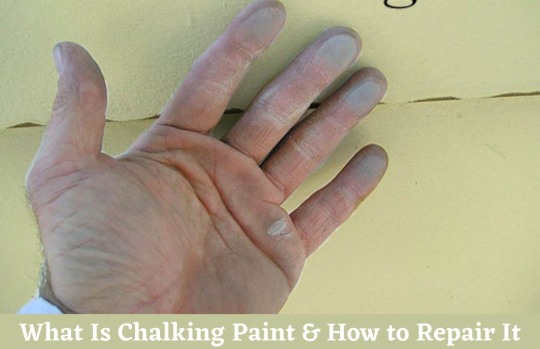
Paint chalking is a common issue that occurs when paint deteriorates over time, resulting in a powdery residue on the surface.
This is caused by the breakdown of the paint's binder, which holds the pigment and additives together.
Paint chalking can occur on various surfaces, including wood, metal, and masonry, and can be particularly problematic for exterior surfaces that are exposed to the elements.
If left untreated, paint chalking can lead to paint failure and the need for costly repairs. In this article, we will explore the causes of paint chalking, how to prevent it, and how to address it if it does occur.
What Is Paint Chaliking?
Paint Chalking means, the formation of fine powder on a painted surface; it occurs due to weathering action which can cause color fading. Although some extended chalking is normal, excessive chalking is a bad sign.

Paint Chalking
Paint Chalking consists of high levels of titanium dioxide and extenders. Initially paint chalking is visible in white and off-white patches and excessive chalking is indicated a certain amount of mold and dirt on the paint surface.
Generally Chalking is caused by exposure to ultraviolet and other forms of radiation or nuclear radiation.
Causes of Paint Chalking
- Using thinned consistency of paint.
- Using cheap quality paint.
- When the paint is overspreading at a time chalking problem occurs,
- Not proper sealing and priming of the porous paint surface.
- Applying paint on the dirty surface.
- Long-term exposure to ultraviolet and moisture.
- Using interior type paint for exterior surface or application.
- Coastal Environments, with salty moist air.
- Using high-pigmented paint.
- Applying fresh paint directly on the old paint surface.
- Chalking can occur when not applying a proper layer of topcoat.
Read More: Best Exterior Paint In India 2022 | Best Paint for Exterior Walls | Best Waterproof Paint In India 2022
How to Identify Paint Chalking Problem
The following signs indicate an excessive amount of chalking is to be done,
- Lighten up the original color of the paint.
- When the clearly visible white and off-white type of patches are on the existing surface of the paint.
- When eroding or blistering the film of paint.
- To deface the appearance of the actual paint surface.
- Easily visible mold on the paint surface.
- When the clearly visible white and off-white type of patches are on the existing surface of the paint.
How to Fix The Paint Chalking Problem
The following steps are used for fixing the chalking paint problem,
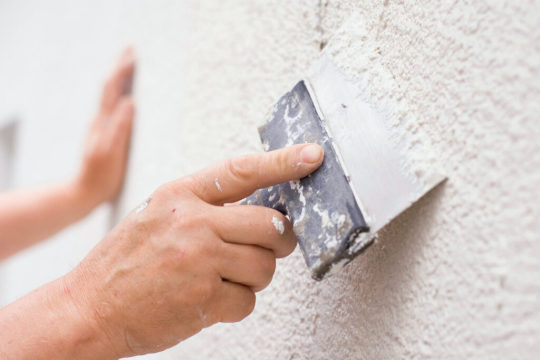
Fix The Chalking Paint Problem
- Initially, to determine the degree of chalking paint by rubbing the paint surface with a dark cloth and a finger.
- For removing all residue of chalk paint by using these methods,
- Excessive chalking in paint is removed by using sandblasting or pressure washing.
- In that case, a pressure washer is unavailable, at that time scrub the paint surface using a stiff type brush with mild detergent.
- Rinse out this surface with strong steam water.
- Moderately to the light surface of chalking in the paint may use sanding or wire brushing.
- For removing the excess surface of chalk powder.
- Then spray the steam strong water by using the garden hose and allow the paint surface to dry.
- To check the surface again your finger and rag for determining the amount of residue chalk.
- If no or little amount of paint chalk remains and the old paint is in good condition then priming is not required.
- In that case, light to moderate paint remains on the surface, then apply a penetrating additive to the first layer of water-based paint.
- It helps to stick on the paint film and also it gives an acrylic finish.
- Acrylic paint is much better than vinyl acrylic paint because it has good resistance properties to chalk.
- In special cases, if clearly, visible chalk is still present then apply alkyl-based primer as a primer coat of paint.
- To finish the surface using high-quality topcoat paint.
Read More: What Is Aluminium Paint? | Advantages and Disadvantages of Aluminium Paint
How To Fix Chalky Residue?
To fix chalky residue on surfaces, follow these steps:
- Clean the surface thoroughly with soap and water to remove any loose chalky residue.
- Allow the surface to dry completely.
- Sand the surface lightly to remove any remaining chalky residue and to create a smooth surface.
- Apply a high-quality primer to the surface. This will create a strong bond between the surface and the new paint.
- Once the primer is dry, apply a coat of high-quality paint to the surface. Make sure to use paint that is suitable for the surface type, such as exterior paint for outdoor surfaces.
- Allow the first coat of paint to dry completely, then apply a second coat if necessary.
- Once the paint is completely dry, inspect the surface for any remaining chalky residue. If any residue remains, repeat the sanding and painting process until the surface is smooth and free of chalky residue.
By following these steps, you can effectively fix chalky residue on surfaces and restore them to their original condition.
How to Reduce Paint Surface Chalking
The following these steps you can ensure that your new paint surface will have fewer chalking issues.
- To choose good quality paint.
- Firstly you should apply good-quality primer to a well-cleaned surface.
- A not-very-thin layer of paint is used for the external surface.
- You should select the lighter color which is less ultraviolet absorbent.
- Applying inorganic pigmented color that is not reacting strongly against ultraviolet rays.
- For washing and cleaning regularly the external paint will greatly reduce the chalking effect of the paint.
- When a new painting surface is suffering from the chalking effect then before applying new paint, the surface rises out with trisodium phosphate and clean water.
- Lastly, repaint the surface when the washed surface is completely dry.
Conclusion:
In conclusion, paint chalking is a common issue that can occur on various surfaces over time. It can lead to paint failure and the need for costly repairs if left untreated.
The causes of paint chalking include age and weathering, poor surface preparation, low-quality paint, and improper application techniques.
However, it can be prevented through proper surface preparation, high-quality paint and application techniques, and regular maintenance and inspections.
If paint chalking does occur, it can be effectively addressed by cleaning the surface, sanding, applying a high-quality primer, and applying high-quality paint.
By following these steps, you can restore your surfaces to their original condition and prevent future instances of paint chalking. Remember to always use the appropriate techniques and materials for your specific surface type to ensure the best results.
FAQs:
What is paint chalking?Paint chalking is a powdery residue that forms on the surface of painted surfaces over time. It occurs when the binder in the paint breaks down due to exposure to sunlight, moisture, or other environmental factors.What causes paint chalking?Paint chalking is caused by the breakdown of the binder in the paint. This can be due to a variety of factors, including exposure to sunlight, moisture, pollutants, and temperature fluctuations.What are the effects of paint chalking?Paint chalking can lead to a dull, faded appearance of the painted surface. It can also cause the paint to become brittle and crack, which can lead to premature paint failure.
You May Also Like
- Best Exterior Paint In India 2022 | Best Paint for Exterior Walls | Best Waterproof Paint In India 2022
- What Is Aluminium Paint? | Advantages and Disadvantages of Aluminium Paint
- Types of Paint Brushes and Their Uses
- 5 Types of Paint Finishes | Paint Finishes for Walls
- How to Get Rid of Paint Smell | Remove Paint Fumes
- What Is Paint | Paint Definition | Painting Components | Properties of Paints
Read the full article
#CausesofPaintSurfaceChalking#chalkpaintproblems#chalking#chalkingdefinition#ChalkingPaint#chalkingpainting#chalkingwall#chalkingwalls#cleaningchalkypaint#HowtoFixTheChalkingPaintProblem#HowtoReducePaintSurfaceChalking#paintchalking#paintchalkinginterior#PaintSurfaceChalking#paintingoverchalkypaint#removechalking#WhatIsChalkingPaint
0 notes
Text
Pros and Cons of Magnetic Locks on Public Bathrooms


Have you ever experienced going into a public bathroom with a regular lock and found yourself fumbling for a key? It can be frustrating. Although, nowadays, some public restrooms have started using magnetic locks instead of the traditional ones. These magnetic locks can work wonders in providing convenience and security, but they have pros and cons.
The Pros And Cons Of Magnetic Locks On Public Bathrooms
Pros
- User-Friendly
Magnetic locks are well-known for their user-friendliness. They work with a simple push or pull, making life easier for people carrying luggage or parents with kids. Magnetic locks for doors of all shapes and sizes can be very convenient and easy to install. With these excellent locks, you no longer need to worry if you forget your passcode or keys.
- Durability
Magnetic locks are tough cookies. They're durable, require minimal maintenance, and can withstand heavy use. That's why they're an excellent choice for busy public restrooms. It boosts bathroom security, saves on lock changes, and cuts long-term costs with durable magnetic locks. Smart choice for your budget
- Security
Magnetic locks can speed up bathroom access during emergencies. They allow fast, keyless openings for quick assistance when needed. Maglocks are also fail-safe by design. It automatically releases the lock during a power outage, ensuring people can exit safely during emergencies.
You want to choose the perfect lock when locking up your facilities, especially in public bathrooms. It ensures top-notch security and protects you and your establishment from unwanted visitors. Having dependable locks can give you a secure feeling and peace of mind in the restroom.
Cons
- Maglocks Depend On Electricity
Magnetic locks rely on a continuous power supply to stay locked. If the power goes out, they automatically unlock, which is a safety feature. But if power outages are common or there's no backup, it can become a security problem. During an outage, anyone, including unwanted folks, can come and go as they please.
- It Can Be Expensive
If you compare magnetic locks to regular ones, they're quite different when it comes to installation. Magnetic locks usually need professionals to set up, which can cost you more. It might also slow down your bathroom construction or renovations, which can be a bit of a hassle.
- Hacking And Tampering
Magnetic locks, like any electronic system, can be at risk of hacking and tampering. Without the right protection, this can cause security problems later on. Hackers might control your locks, which can be a problem. So, it's crucial to have the proper cybersecurity measures in place to prevent issues down the road.
- It Is Not Aesthetic
Maglocks might not be stylish to look at compared to other locks, unlike smart locks, which give a classy and expensive touch to your bathrooms. The wires can be visible at your door and could destroy its design. You may have to find a way to hide the cables and hardware so it doesn't stain your bathroom designs.
- Maintenance
Even though magnetic locks are typically low-maintenance, there might be times when they need servicing or repairs. You may need to hire an expert if there are issues with the electrical components or wiring. It can be more expensive compared to the old-school locks. It may require electrical experts since it runs on electricity.
The Bottom Line
Consider the pros and cons if you're thinking of getting a magnetic lock for your public bathroom. Maglocks can offer enhanced security to your bathrooms. It also provides convenience and is user-friendly. It gives easy access and protection during emergencies.
Although magnetic locks also have some cons. It depends so much on electricity, so you may need backup power. Its maintenance can also be costly compared to traditional locks. Assess the pros and cons given above to know if magnetic locks are suited for you.
You May Also Like
- How To Properly Clean and Maintain Your Bathroom
- Standard Shower Sizes: Finding the Perfect Fit for Your Bathroom
- 41 Bathroom Accessories List With Image
Read the full article
0 notes
Text
7 Tips for Choosing the Perfect Home for Your Family

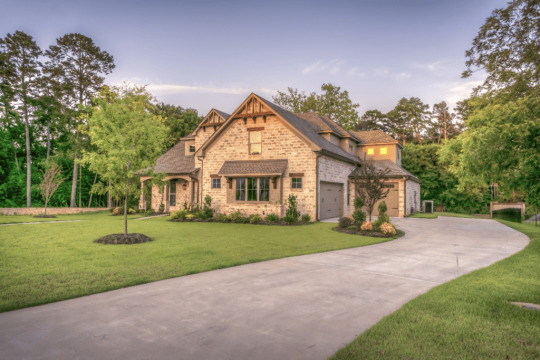
Choosing the right home is a monumental decision for any family. It's not just about finding a shelter but also a nurturing environment where wholesome memories are made and life is lived to the fullest. A home should be a place where every family member feels safe, comfortable, and genuinely at ease.
This choice becomes even more significant when considering the long-term aspects like the family's growth, changing needs, and the financial investment involved. However, the process of finding the perfect home can be daunting, given the myriad of factors to consider. That's where professional guidance can come in handy, assisting in aligning your family’s needs with the available options.
1. Assessing Your Remodeling Needs with a Professional
Before diving into the house-hunting process, it's wise to assess the remodeling needs of any potential home you come across. Some homes might look appealing at first glance but may require substantial improvements to meet your family's standards or personal taste. Understanding the extent and cost of necessary renovations will play a significant role in your decision-making process.
This is where the expertise of a remodeling company becomes invaluable. They can help ensure that when the time comes to move into your home, everything is exactly as you need it to be. A company like the C. Michael Exteriors Home Remodeling Company can provide a professional assessment, shedding light on the remodeling potential of a home. They can help determine whether a house is a good fit for your family, considering the budget and the extent of renovations required. With their guidance, you can better understand what changes are feasible and how these renovations can transform a space to meet your family’s needs.
Furthermore, having a clear picture of the remodeling needs beforehand can also aid in negotiating the price of the home.
2. Choosing the Right Location
The old adage, "location, location, location," holds true when it comes to choosing the perfect home for your family. The location of your home will significantly impact your daily life and long-term satisfaction. It's crucial to find a place that aligns with your lifestyle and daily routine.
Consider proximity to your workplace, local schools, healthcare facilities, and other essential amenities. A home near good schools and within a short commute to work can save a lot of time and stress. Additionally, consider the safety of the neighborhood, the kind of community, and the availability of recreational spaces for your family to enjoy.
It's also worth thinking about the long-term prospects of the area. Is it up-and-coming? Does it have the potential for growth, or is it in decline? Researching and considering the broader aspects of the location can help ensure that you are making a wise investment for your family's future.
3. Size and Layout
The size and layout of a home are fundamental aspects to consider. It's essential to find a home that accommodates your family comfortably, both now and in the foreseeable future. Think about the number of bedrooms and bathrooms you'll need, the size of the living areas, and whether the layout would flow well with your family’s daily activities.
A cramped or poorly designed space can lead to daily frustrations, while a spacious and well-thought-out layout can promote ease and harmony within the household. Considering your family's growth, will the home still meet your needs in the years to come? It's wise to think long-term when considering the size and layout, ensuring the home can evolve with your family’s changing dynamics over time.
4. Budget Considerations
It's essential to have a clear and realistic budget when searching for a home. Your budget should encompass not only the price of the home but also other costs such as taxes, insurance, and potential homeowners association (HOA) fees. Having a solid budget in place can streamline your search, helping you avoid wasting time on homes outside your financial reach.
Moreover, it’s a good idea to have some cushioning for unexpected expenses. Homeownership comes with a fair share of surprises, and having a financial buffer can help manage these unexpected costs without undue stress.
5. School Districts and Education
The quality of local schools is a crucial factor for families with children. Good schools can provide a solid educational foundation for your kids, which is invaluable. Research the school districts in the areas you’re considering, and if possible, visit the schools to get a feel for the environment.
Another thing to consider is that homes situated in good school districts tend to hold their value well and may even appreciate over time. Even if you don’t have children, considering the quality of local schools can be a wise financial decision when choosing a home.
6. Neighborhood Safety and Community
Safety should be at the forefront of your mind when selecting a neighborhood. A safe community will provide a more tranquil living environment and peace of mind. Look into the crime rates in different areas, and consider speaking with potential neighbors to get a sense of the community’s vibe.
A strong sense of community can also greatly enhance your living experience. Neighborhoods with a friendly and inclusive atmosphere can provide social opportunities and a sense of belonging, which can be particularly comforting.
7. Resale Value
Although you may be focused on finding the perfect home for your family now, it's also prudent to consider the future resale value of the property. The housing market can fluctuate, and certain features or locations may enhance a home’s value over time. Look for homes in desirable locations, with modern amenities, and in good overall condition, as they are likely to appreciate in value.
Moreover, making wise remodeling choices, like those suggested by professional remodeling companies, can also boost your home's resale value. It’s about finding a balance between what suits your family now and what will appeal to potential buyers in the future.
Wrapping Up
Choosing the perfect home for your family is about finding a place where your family can grow and thrive while also making a wise financial investment. By taking the time to thoroughly evaluate your options and considering the various factors discussed above, you can make a decision that will serve your family well for years to come.
Remember, seeking professional advice, whether it’s from a real estate agent or a remodeling expert, can provide invaluable insights and help navigate the complexities of the home-buying process.
You May Also Like
- 5 Garden Tips to Increase Your Home’s Market Value
- Average Bedroom Size: What is Considered a Standard Bedroom Size for Homes
- Home Design And Planning: 10 Important Things To Consider At Your Dream Home
Read the full article
0 notes
Text
Queen Size Bed Dimensions: In Feet and Centimeters - Complete Guide

Queen size beds are a popular choice among many households, as they provide comfortable sleeping space for couples and individuals alike.
The dimensions of a queen size bed in feet can vary slightly depending on the country and region, but generally, a queen-size bed in the United States measures 60 inches in width and 80 inches in length, making it six feet wide and six and two-thirds feet long.
This makes it a versatile choice for a variety of sleeping arrangements, from shared beds to individual sleepers who prefer a larger sleeping space. In this article, we will explore the dimensions of a queen size bed in feet in more detail, as well as its benefits and drawbacks, to help you determine if it's the right fit for your sleeping needs.
Read More: 10 Types of Furniture | Dining Room Furniture Names
Standard queen size bed dimensions In Feet &b CM?
The most common Queen Bed Dimensions are 80 inches in length and 60 inches in width. A queen bed is large enough to comfortably sleep two people while also leaving space in your bedroom.

In comparison to a full-size, the additional length and width of a queen give you room to stretch out and make space for the occasional child or pet that needs to be comforted at night.

Queen Bed Dimensions In Inches: 80” x 60” x 15”
Queen Bed Dimensions in feet: 6.6’ x 5’ x 1.25’
Queen Bed Dimensions In cm: 203.2cm x 152.4cm x 38.1cm
Read More: The Standard Room Size & Location In A House
How Does a Queen Size Bed Compare to Other Bed Sizes?
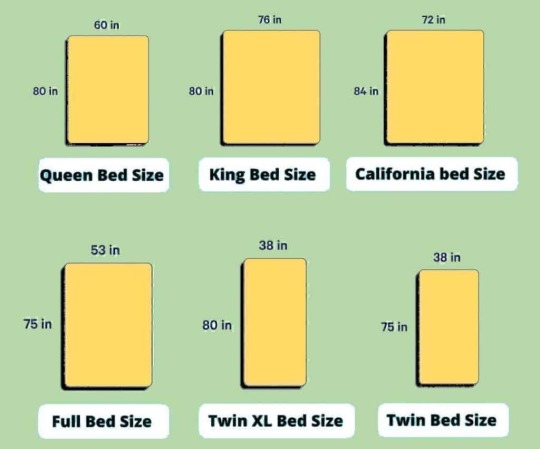
Mattress SizeWidthLengthTwin Bed Size38 inches80 inches Twin XL Bed Size38 inches 75 inches Full Bed Size60 inches 80 inches King Size Bed76 inches 80 inches Queen Size Bed54 inches 75 inches California King Size Bed72 inches 84 inches
Standard Bed Sizes
- Twin bed Size
- Twin extra-long (XL)
- Full-Size Bed
- Queen Size Bed
- King Size Bed
- California King Bed
While selecting the size of a new mattress you must measure the size of the bed and accordingly you have to choose it.
A Queen Size mattress is the most popular among all bed sizes in the United States and the UK countries. A Queen Size bed offers plenty of space to sleep next to your partner without taking up extra space in the bedroom.
However, you must have to consider various factors before choosing the right bed mattress size for your bedroom such as the size of the room, height, and types of sleeper you are.
Choosing the Right Bed Size for Your Needs
Choosing the right bed size is an important decision that can significantly affect your comfort and quality of sleep. Here are some factors to consider when selecting the right bed size for your needs:
Available space: The first factor to consider is the available space in your bedroom. Measure the room and make sure to leave enough space around the bed to move around comfortably. If you have a small bedroom, a smaller bed size may be more appropriate.
Sleeping arrangements: Consider who will be sharing the bed and their sleeping habits. If you sleep with a partner, a larger bed size such as a queen or king may be more appropriate to allow both of you to have enough space to sleep comfortably. If you have children or pets who like to join you in bed, you may need to consider a larger bed size.
Body size: Your body size is also an important factor to consider when choosing a bed size. If you are tall, you may need a longer bed size such as a California king to accommodate your height. If you are larger in size, a larger bed size such as a queen or king may be more comfortable.
Budget: Bed sizes vary in price, and it is important to consider your budget when selecting a bed size. Keep in mind that larger bed sizes are typically more expensive, so it may be necessary to compromise on the size to stay within your budget.
Advantages and Disadvantages of a Queen Size Bed
Queen size beds are one of the most popular bed sizes, offering a comfortable sleeping space for couples and individuals alike. Here are some advantages and disadvantages of a queen size bed:
Advantages:
- Comfort: Queen size beds provide ample space for couples or individuals to move around and get comfortable while sleeping.
- Availability: Queen size beds are widely available, making it easy to find bedding and accessories to fit your needs.
- Cost-effective: Queen size beds are typically less expensive than larger bed sizes such as king or California king.
- Space-saving: Queen size beds are a good compromise between space and comfort, making them a great option for smaller bedrooms.
Disadvantages:
- Limited space for couples: While queen size beds can accommodate couples, they may not provide enough space for those who need more room to sleep comfortably.
- Limited space for families: For families with children or pets who like to sleep in the same bed, a queen size bed may not provide enough space for everyone.
- Limited length: Queen size beds are typically 80 inches long, which may not be long enough for taller individuals who need more legroom.
- Limited accessories: Compared to larger bed sizes, there may be fewer accessories such as sheets and comforters available in queen size.
Conclusion
In conclusion, choosing the right bed size is essential for a comfortable and restful sleep, and a queen size bed is a popular choice for many. Standard queen size bed dimensions are 5 feet in width and 6.67 feet in length, and this size can vary depending on the manufacturer and country of origin.
When selecting a bed size, it's important to consider factors such as room size, personal preferences, and sleep habits. With the right bedding and accessories, a queen size bed can provide a cozy and comfortable sleeping environment. Overall, whether you opt for a queen size bed or another size, the key is to find the size that best meets your needs and preferences for a good night's sleep.
FAQs:
Queen size bed dimensions in feetA queen bed measures 5 feet in width and 6.67 feet in length, making it larger than a full or double bed but smaller than a king bed. It is a popular choice for those who want more sleeping space without taking up too much room.Queen size bed dimensions in CmA queen bed measures approximately 152.4 cm in width and 203.2 cm in length. It is a versatile size, providing more space than a full or double bed but taking up less room than a king bed.Queen size cot dimensions in feetThe dimensions of a queen size cot in feet can vary, but a typical queen size cot measures approximately 5 feet (width) by 6.67 feet (length), which is the same as a standard queen bed. However, it's important to note that cot sizes can vary depending on the manufacturer and the specific model.Queen size bed dimensions in feet indiaIn India, the dimensions of a queen size bed are usually the same as a standard queen bed in the United States. A queen size bed in India typically measures 5 feet (width) by 6.67 feet (length), although there may be some variation depending on the manufacturer and specific model.Queen size bed dimensions in feet india
You May Also Like
- The Standard Room Size & Location In A House | Standard Size of Bedroom | Standard Room Dimensions | Standard Room Sizes In a House
- 10 Types of Furniture | Dining Room Furniture Names | Types of Bedroom Furniture
- What Is Standard Window Size | Window Size Chart | Standard Window Height | Standard Window Width | Common Window Sizes
- What Is Standard Door Size | Standard Door Height | Standard Door Width | Standard Door Frame Size
- What Is Standard Window Size | Window Size Chart | Standard Window Height | Standard Window Width | Common Window Sizes
Read the full article
#dimensionsofaqueenbed#dimensionsofaqueensizebed#dimensionsofqueenbed#dimensionsonqueensizebed#howbigisaqueenbed#howlongisaqueensizebed#howmanyfeetisaqueenbed#howmanyfeetisaqueensizebed#howmanyfeetwideisaqueensizebed#howmanyinchesisqueensizebed#howwideisaqueenbed#howwideisaqueensizebed#measurementsofaqueensizebed#queenbeddimensions#queenbeddimensionsinfeet#queenbedframesize#queenbedmeasurements#queenbedsize#queenbedsizeinfeet#queenframesize#queensizebeddimensions#queensizebeddimensionsinfeet#queensizebedframedimensions#queensizeframedimensions#sizeofaqueenbed#sizeofqueenbed#standardqueenbedframe#whataremeasurementsofaqueensizebed#whatarethedimensionsofaqueensizebed#whatarethemeasurementsofaqueensizebed
0 notes
Text
Types of Light Bulbs: A Comprehensive Guide to 50 Different Light Bulb Types, Including Incandescent Bulbs
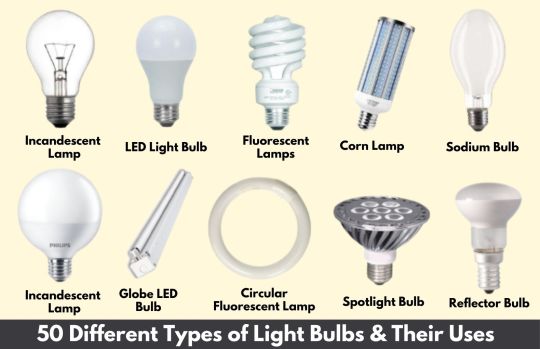
Introduction To Light Bulbs
Light bulbs are devices that produce light by converting electrical energy into visible electromagnetic radiation.
They are widely used in homes, businesses, and public spaces to provide illumination. Light bulbs come in various shapes and sizes, and the type of bulb you choose can impact the brightness, color temperature, and energy efficiency of the light produced.
There are several types of light bulbs available on the market today, including incandescent bulbs, halogen bulbs, compact fluorescent bulbs (CFLs), and light-emitting diode (LED) bulbs.
Incandescent bulbs are the oldest and most common type of light bulb, but they are also the least efficient.
Halogen bulbs are a type of incandescent bulb that uses halogen gas to increase efficiency and lifespan.
CFLs are a more energy-efficient alternative to incandescent bulbs, while LED bulbs are the most energy-efficient and longest-lasting type of bulb available today.
When choosing a light bulb, it's important to consider factors such as the bulb's wattage, color temperature, and lifespan. Higher-wattage bulbs produce more light, but they also consume more energy.
Color temperature refers to the perceived "warmth" or "coolness" of the light produced by the bulb, with lower color temperatures producing warmer, yellow light and higher color temperatures producing cooler, bluer light.
Lifespan is an important consideration for LED bulbs, which can last up to 25,000 hours or more, compared to incandescent bulbs, which typically last only around 1,000 hours.
What Is Light Bulb?
The electric lamp's glass portion that emits light while electricity is passed through it is known as a bulb. A light bulb is an electric light source which is also referred to as a lamp.
In the middle, there are two solid connecting wires with a thin wire connected between them. This thin wire is known as filament.
The bulb becomes fused when the thin wire filament breaks, and even a fused bulb does not glow.
The brightness, as well as the color of a light bulb, may change the look of a home as well as even your mood when you are in it.
As a result, buying an entire box of a similar light bulb as well as installing it around your home is not a good idea.
While most of us do not take enough consideration to house lighting, selecting the best light bulbs for your house may improve the mood, reduce your power bills, as well as also enhance your efficiency.
As a man-made fire, the electric light bulb has been considered the more valuable innovation. After sundown, the light bulb served to maintain social order, extending the workday well into the nighttime, as well as helping us to navigate and drive securely in the darkness. There would be no nightlife without a light bulb.
Read More: Smart Home Products Every House Requires
Types Of Light Bulbs
New and innovative varieties of different Types of Light Bulbs are always being developed. The most common light bulb types as well as how we utilize them are shown here.
Light Bulbs According To Shape
- Incandescent lamp
- Halogen lamp
- Tube fluorescent lamp
- Compact fluorescent lamps (CFLs)
- LED light bulb
- Globe LED bulb
- Sodium lamp
- Corn lamp
- LED strip light
- Mercury lamp
- Dimmer switch
- LED panel
- Spotlight bulb
- Circular fluorescent lamp
- Twisted fluorescent lamp
- Flame shape bulb
- Reflector
- Diode
- Fluorescent lamp
- Adapter
Types of Light Bulbs According To Sizes
- A series
- B series
- S series
- F series
- G series
- R series
- T series
- E series
- MR series
- ALR series
- BR series
- PAR series
- BT series
- ED series
- C-7/F series
- LINESTRA
- PS-25/PS-35
- RP,MB,BT
Light Bulb Bases
- E10 mini screw
- E11 mini candelabra
- E12 candelabra
- E14 European
- E17 intermediate
- E26 medium
- E27 medium
- E39 mogul
- E40 mogul
- EX39 extended mogul
Types of Light Bulbs According To Shape
Incandescent Lamp

The incandescent light bulb is an electric light supply that works on the principle of incandescence, it would be the emission of light produced by heating a filament. It is available in a huge variety of sizes, wattages, as well as voltages.
In an incandescent bulb, the tungsten filament is contained in a glass outer layer. The flow of electricity runs across the filament, heating it to the level where it gives light.
Incandescent lamps are popular in table lamps, corridor lighting, workstation lamps, closet lighting, decorative lighting, as well as chandeliers.
Halogen Lamp
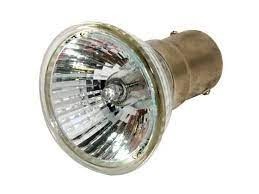
The halogen light bulb often known as a halogen lamp is an incandescent lamp that utilizes a halogen gas to enhance either light output or recommended life.
In comparison to normal incandescent lights, they are noted for their relatively high efficiency, lighting quality, as well as high-rated life.
Halogen types of light bulbs can be used in a wide range of commercial as well as household uses. Halogen lamps are utilized in headlights, under-cabinet illumination, as well as industrial lights.
Moreover, halogen reflectors such as MR and PAR lamps are frequently used for directed illumination including spotlights as well as floodlights.
Tube Fluorescent Lamp

In comparison to conventional incandescent bulbs, these bulbs are mostly very costly to purchase. Therefore, because they have such a long lifespan, they generally pay for themselves over time. It can produce a great source of light; however, it is not dimmable. Unfortunately, it may start to blink as they age as well as may require to be changed.
Read More:12 Cheap Ways to Increase Home Value
Compact Fluorescent Lamps (CFLs)
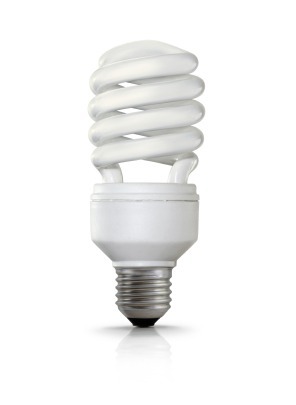
A compact fluorescent lamp is often known as a compact fluorescent type of light bulb and is a form of a fluorescent lamp that is used to replace incandescent or halogen bulbs. The screw-in, as well as plug-in compact fluorescent lights, are the two main types of compact fluorescent lamps.
The screw-in lights are self-ballasted as well as may typically be inserted in an existing screw socket without any extra equipment, whereas plug-in bulbs need ballast as well as a socket that matches their unique base configuration. For screw bases, it is also known as integrated, whereas, for plug bases, it is known as non-integrated.
Both of these are noted for their efficiency, high durability, low price, as well as ease of updating, and are available in a wide range of sizes, wattages, color temperatures, and base varieties.
LED Light Bulb

The LED light bulb is also known as an LED lamp and it is an electric light that uses light-emitting diodes to generate light.
It is a common quickly growing technology, and the best uses for LED lighting are continuously changing. LED types of bulbs are presently well-suitable for uses such as signs and indications, night lamps, flashlights, undercabinet fixtures, as well as many recessed light/downlights uses where color temperature consistency is not required.
Globe LED Bulb
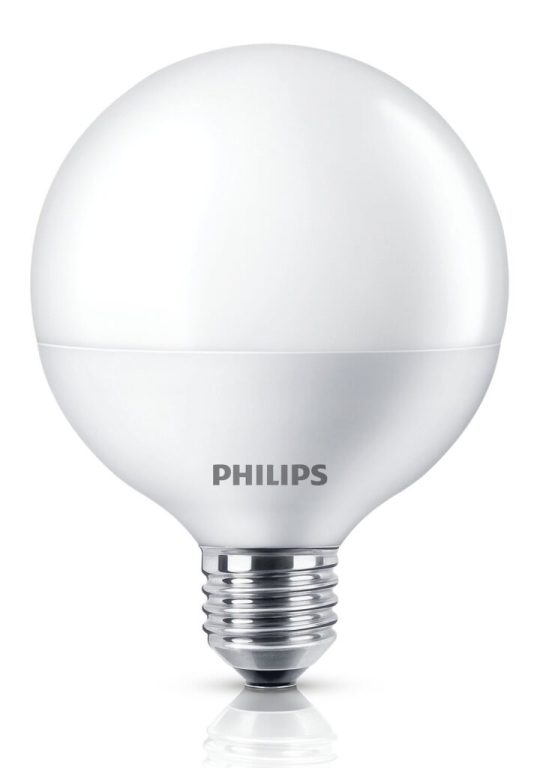
These bulbs are shaped like incandescent bulbs, but rather than filaments, they use LED technology, which is a perfect replacement for outdated lights in your house. They will significantly reduce the cost of lighting for your house or place of business as well as consume much lesser energy than conventional incandescent bulbs.
Sodium Lamp

Sodium is available in both high as well as low-pressure variants. The light produced by high-pressure sodium bulbs is reddish-yellow, whereas the light from low-pressure sodium bulbs is much more equally white. The light of a bulb is produced by exciting sodium.
Corn Lamp

An assembly of light-emitting diodes (LEDs) placed on a metal frame is known as a corn lamp. According to how the yellow LEDs are arranged on the fixture, which resembles corn kernels on a corn cob, these lights are also known as corn lamps.
For general use as well as industrial lighting purposes, corn lamps are a highly popular choice. To be available to satisfy almost every lighting application, these lights are available in a wide range of different wattage choices, base diameters, as well as physical dimensions.
The most typical uses of corn types of light bulbs include household lighting, warehouse lighting, commercial and retail spaces, municipal and school lighting, garage lighting, walkway lighting, industrial lighting, and security lighting.
Read More:15 Types of Fans | Different Types of Fans For Home | Ceiling Fan Type
LED Strip Light

The flexible circuit board filled with LEDs which you can attach to practically any place you wish to provide intense lighting in a range of colors as well as brightness is known as an LED strip light.
It is useful for applications like cove lighting, inside furniture, and kitchen cabinets because the strip may be hidden, as well as it can be utilized for underwater illumination due to its simplicity of installation.
The LED Strips can also be referred to as LED Ribbons because of their look, which is similar to a ribbon.
This is flexible enough to bend both horizontally and vertically, enabling you to adapt to any architectural curve as well as providing shadow-free, seamless illumination.
Mercury Lamp

The high-intensity discharge lamp would be the mercury-vapor lamp. It produces extremely brilliant light directly through its own arc by passing an arc via mercury that has been evaporated in a high-pressure tube.
Mercury vapor lamps are long-lasting, bright light bulbs that are commonly used to illuminate huge areas including streets, gyms, sports stadiums, banks, and malls.
Dimmer Switch

The dimmer switches are an excellent approach to having greater influence over the lighting in your house or workplace.
They generally replace your existing light switch as well as may be rapidly wired into the wall to provide you immediate control over the intensity of light coming into your house.
LED Panel

LED panel lights are an alternative to normal fluorescent ceiling lights as a type of lighting fixture. These are among the finest solutions for indoor illumination.
Despite the fact that panel lights using technology is still relatively new to the marketplace as well as growing in popularity because of its elegant appearance and innovative features and designs, LED technology has been utilized for a long time.
A panel is a square, curvy, or flat piece that is mostly installed on a wall, ceiling, or doorway.LED panels are mostly used in restaurants, castles, residences, hospitals, marketplaces, department shops, workplaces, hotel lobbies, etc. LED panels are suitable for both commercial as well as residential use.
Read More: Energy-Efficient Home | Energy-Efficient House | Affordable Zero Energy Homes
Spotlight Bulb

Homeowners as well as business owners both commonly utilize these powerful bulbs in spotlights. They may be used as accent lighting for interior and exterior lighting installations, as well as to brighten the area where you working.
LED Spotlights enable you to focus the light wherever you require it as well as have complete control over the lighting.
Replacing ordinary halogen as well as incandescent spotlights in track lighting, shop and exhibition lighting, and recessed lighting with our LED spotlights and LED spotlight lamps.
Circular Fluorescent Lamp

As they come in a variety of sizes as well as wattages, circular fluorescent bulbs can actually be a really versatile source of light and are utilized in a variety of applications.
These bulbs just provide you with a few various lighting options, the much more popular of which are warm white, cool white, as well as daylight.
There are various options available as well as these bulbs can provide more wattage than conventional bulbs available on the marketplace.
Twisted Fluorescent Lamp

As these fluorescent light bulbs consume considerably lesser energy than incandescent lights as well as have a long lifespan, there will be significant savings over the length of their lifespans. They come in brighter or dimmer varieties as well as perform well for both houses and workplaces.
Flame Shape Bulb

These bulbs are suitable to be used in chandeliers or lamps which give the look of candlesticks. Due to the obvious way, it mimics actual flames owing to their shape, this bulb type produces a comfortable source of light as well as works well as accent lighting.
It is crucial to think about whether you'll require to dim the lights because some can be, while others cannot. Your lighting becomes significantly more complicated as a result of the unique shape as well as style.
Reflector

A silver covering of these bulbs serves to direct light to a specified location. In most cases, reflector light bulbs are utilized in the spotlight as well as in flood applications.
They are available in a variety of sizes, brightness levels, and color temperatures, as well as give unrivaled light whenever it is most required.
Diode

These bulbs are suitable for desk lights, under-cabinet lighting, as well as task lighting. They differ in terms of lumens as well as lifespan.
Fluorescent Lamp

The glass tube loaded with a combination of argon as well as mercury vapor makes up a fluorescent light. This lamp will keep your workstation bright so that you can view it clearly because they are a highly powerful as well as reliable light source.
Adapter

Adapter
The adapter is the greatest approach to increase the amount of illumination you may have in your house without adding extra lights.
It is simple to wire and install as well as highly secure to use. There are polarized as well as non-polarized variants available to buy.
Types of Light Bulbs According To Sizes
A Series

The majority of lighting applications for both commercial as well as residential settings often utilize this type of bulb, which is regarded as the traditional bulb shape.
It possesses a pear-shaped base which is referred to as an Edison screw. The width of the bulb can be determined by the number following the "A."
B Series
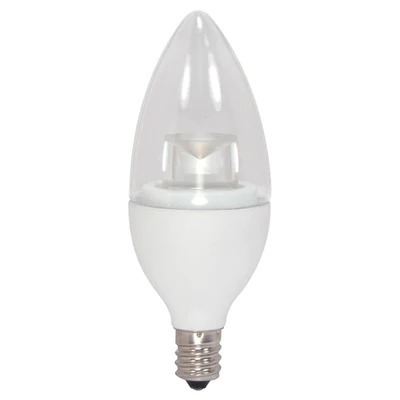
The structure of B series light bulbs is simple to recognize if you recall as the "B" stands for "blunt," because these lamps are somewhat rounded as well as have only a tiny tip just on the end.
This is commonly utilized for decorative uses, such as chandeliers, pendant lights as well as wall sconces.
S Series

S series lamps are frequently seen on outside signs. It can be found at theatres, restaurants, casinos, as well as even hotels.
F Series
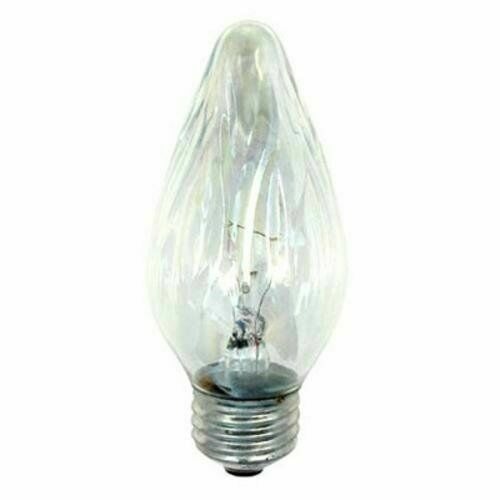
The key to recognizing how the F series lights look is as the word "flame" begins with the letter "F," and these lights resemble a flame. Due to the fact that they cannot withstand the elements as normal bulbs can, they are mainly used for decorative inside illumination.
G Series

The size of these globe-shaped bulbs fluctuates widely, from the smaller G-25 to the considerably bigger G-40. The globe light bulbs are utilized in theater venues, restaurant places, as well as hotels for decorative purposes.
R Series

R Series Bulbs include a reflecting coating on an elliptical part that is below the main bulb.
Read the full article
#differenttypesofbulbs#differenttypesoflightbulbs#incandescentbulbs#incandescentlightbulb#incandescentlightbulbs#lightbulb#lightbulbbasetypes#lightbulbbases#lightbulbtypes#lightbulbstypes#smalllightbulbs#typealightbulb#typeoflightbulbs#typesoflightbulbbases#typesoflightbulbs
0 notes
Text
How To Select Perfect Kitchen Counter Height

What Is a Kitchen Counter?

Countertop In Kitchen
A kitchen counter is a horizontal work surface in a kitchen, used for food preparation, cooking, and serving.
They are typically made of materials such as laminate, granite, or quartz and come in various shapes and sizes to fit the dimensions of a specific kitchen.
Kitchen counters can be integrated with cabinets and sinks for a seamless look, and often have built-in features such as cutting boards, knife holders, and electrical outlets for small appliances.
Some kitchen counters may also have a backsplash to protect the wall from spills and splatters. A kitchen counter is a functional and essential part of a kitchen, and the choice of material and design can impact the overall style and functionality of the space.
In this article, we will discuss "what should be standard kitchen counter height for normal homeowners".
Read More: 6 Most Popular Types Of Kitchen Layouts | Type of Kitchen | Types of Kitchen Designs
Standard Kitchen Counter Height
For proper and comfortable working on the kitchen platform, the kitchen counter height must be sufficient means it should be not too high and too low for any person who has an average height.
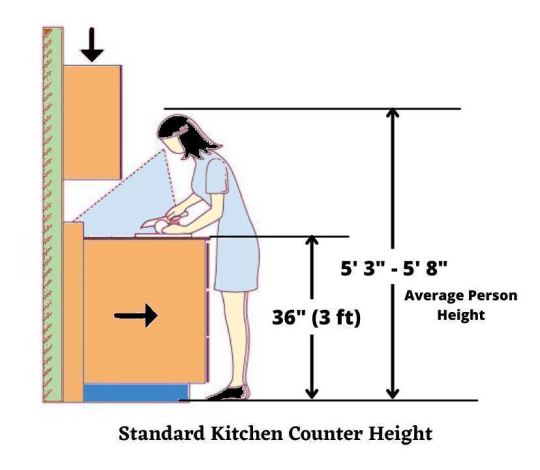
Standard countertop depth
The standard kitchen counter height is 36" (3 feet) from floor level in general for types of kitchen layouts.
Be aware, that this kitchen counter depth is recommended for making things comfortable for average-height people, who are 5 feet 3 inches to 5 feet 8 inches in height.
In case, your height is much smaller or tall, then this standard kitchen counter depth might not be ideal for you.
How to Choose the Correct Counter Height?
Most professionals recommend the counter height around 36" (feet) considering the average man's height of 5' 8" and women's height of 5' 3".
They consider this height comfortable to work on a kitchen platform for average height from a standing position without bending over.
This average countertop height is sufficient for cooking and food preparation work, but if you might have any special needs then you have to select the height according to your need.
Once you decide on the height of the countertop then go for the choice of cabinets, countertop materials, and appliances that accommodate it.
Read More: What Is Kitchen Triangle | Kitchen Work Triangles | Kitchen Triangle Dimensions | Kitchen Work Triangle Rules
What Can Be Put On Kitchen Counter?
The kitchen countertop can be decorated in a different way to make it a refreshing place while working.
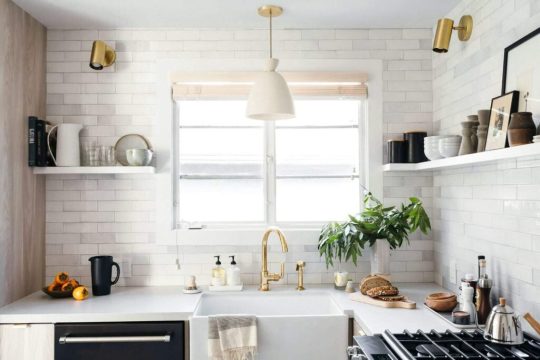
What Can Be Put On Kitchen Counter
1. Coffee Station
Who doesn't want morning coffee nowadays? You can put the mini coffee station on the kitchen countertop with your favorite mugs and sweeteners around the coffeemaker.
2. Spices and Oils
Placing oil bottles and spices on your counter now only look good, but will also encourage you to try something new in the kitchen.
3. Display Cutting Boards and Trays
Cutting boards, platters, and trays look attractive when propped against a sleek backsplash. Arrange them together in a basket made of steel wire.
4. Make Easy Accessible Changing Point
Make easily accessible change point in the counter corners which are generally remended unused.
5. Repurposed Boxes
As we know the kitchen is a hot place to work, who can flip an old file box or crate on its sidewall for extra space to display your essentials? It is also a great place for putting your favorite cooking guidebooks.
6. Kitchen Staples
Keep containers on the counter for go-to-use items like pasta, flour, and beans.
7. Art Display
You can add any art to display around the kitchen countertop to make feel different after watching it.
8. Fresh Fruits
For purpose of decoration or healthy snacking, fresh fruit always looks beautiful and attractive.
Read More: 10 Types of Furniture For Living Room, Kitchen, Bedroom
Standard Kitchen Island Height
The kitchen island is one of the important and essential kitchen layout features. It offers many benefits ranging from dining to meal preparation can be done on it. Designers always try to include an island in a kitchen layout.
One important dimension people forgot while planning the proper kitchen layout is island height. In case the kitchen island is too high or too low, it creates a problem for working personally on it and reduces the efficiency of work.
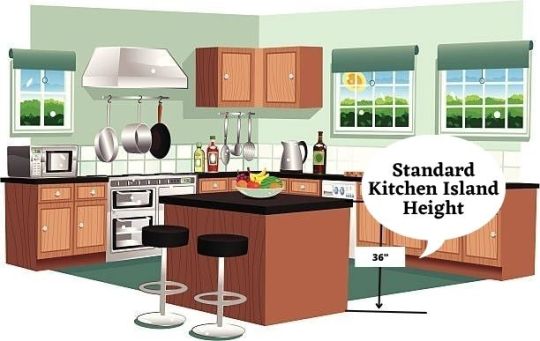
Standard Kitchen Island Height
In most cases, the designer keeps the kitchen island height as same as the standard counter height which is around 36" from floor level. This height is ideal for average-height adult men and women who are easily able to work around.
Different Types of Kitchen Layouts
6 Most Popular Types Of Modular Kitchen Layouts
1. L-Shape Kitchen Layout
2. U-Shape Kitchen Layout
3. G-Shape Kitchen Layout
4. Wall Kitchen Layout
5. Galley Kitchen Layout
6. Kitchen Island
Standard Height Bathroom Countertop
While designing your bathroom, always keep in mind the standard height of the bathroom countertop. If it is too low then it will become the reason for back pain for many peoplers and if it is too low it will become hard for kids who have smaller heights compared to adults.

standard bathroom countertop height
The standard bathroom countertop height is generally kept between 30 to 32" which is lower than the standard counter height in the house.
Conclusion
In conclusion, kitchen counters play a crucial role in any kitchen and serve as a versatile and functional workspace.
With the wide range of materials and designs available, it is important to consider factors such as durability, maintenance, and style when selecting a kitchen counter.
A well-designed kitchen counter can not only enhance the aesthetic appeal of a kitchen but also provide a durable and convenient surface for food preparation and cooking.
Whether you are remodeling your kitchen or building a new one, choosing the right kitchen counter is an important decision that can impact the overall functionality and aesthetic of your space.
FAQs:
what is standard kitchen counter height?The standard kitchen counter height is 36" (3 feet) from floor level in general for types of kitchen layouts. This height is comfortable for average-height people, who are 5 feet 3 inches to 5 feet 8 inches in height. Standard Height Bathroom Countertop The standard bathroom countertop height is generally kept between 30 to 32" which is lower than the standard counter height in the house. What is the best material for a kitchen counter?The best material for a kitchen counter depends on individual needs and preferences. Factors to consider include budget, maintenance requirements, durability, and style preferences.How do I maintain my kitchen counter?Maintenance requirements vary depending on the material used for the kitchen counter. Regular cleaning with soap and water is recommended for most materials. Some materials may require additional care such as regular sealing for granite or oiling for butcher blocks.How do I install a kitchen counter?The installation process for a kitchen counter can be complex and requires specialized tools and skills. It is recommended to hire a professional for kitchen counter installation.
You May Also Like
- 6 Most Popular Types Of Kitchen Layouts | Type of Kitchen | Types of Kitchen Designs
- What Is Kitchen Triangle | Kitchen Work Triangles | Kitchen Triangle Dimensions | Kitchen Work Triangle Rules
- 10 Types of Furniture For Living Room, Kitchen, Bedroom
- How to Get Rid of Kitchen Smells? Top 10 Tips
- Parking Space Dimensions | Parking Space Size | Average Parking Space Size | Parking Spot Dimensions
- Queen Bed Dimensions | Dimensions on Queen Size Bed
- What Is Standard Window Size | Window Size Chart | Standard Window Height | Standard Window Width | Common Window Sizes
- What Is Standard Door Size | Standard Door Height | Standard Door Width | Standard Door Frame Size
- Window Height From Floor | Standard Height of Window From Floor Level | Height of Window From Floor | Sill Height of Window
- Standard Ceiling Height | Ceiling Height | Average Ceiling Height | How Tall Are Ceilings | Typical Ceiling Heights | Standard Height of Residential Building
Read the full article
#averagecounterheight#counterheights#countermeasurements#countertopclearance#countertopheight#howtallarekitchencounters#kitchencounterdepth#kitchencounterheight#kitchencounterheights#kitchencountersdimensions#kitchencountertopdepth#kitchencountertopdimension#kitchencountertopheight#kitchenheight#normalcountertopheight#standardcounterdepth#standardcounterheight#standardkitchencounterdepth#standardkitchencounterheight#standardkitchencountertopdepth#whatiskitchencounterheight#whatisstandardkitchencounterheight
0 notes
Text
How to Choose the Right Curtains For Your Living Room

The majority of time spent relaxing at home is within the four walls of the living room. Therefore, this space needs to be visually pleasing with décor guided primarily by comfort. A big part of this is which curtains hang on the window, and it dictates more than meets the eye. Here’s how you can make this major decision easily.

Consider How the Sunlight Impacts the Room
When you sit on the couch or try to watch your show on the TV, how does the sunlight affect your relaxation time? Depending on where your house is built and which position it faces, the sun might be shining directly through into your living room. This can impact your enjoyment, comfort, and capacity to unwind or concentrate. So, this should be a top focus when deciding on curtains because you may need a thicker material, longer length, or UV protection for the material to avoid color fading or general damage.
Read More: Curtains vs. Drapes: Exploring the Differences and Choosing the Right Window Treatment
Think About Privacy
Privacy is another major priority when it comes to how you feel in your personal space. It is never an ideal situation when you are trying to sit back and recalibrate but you have passersby looking in through your window. The type of curtain you pick can also mean the difference between potential home invaders casing out your property or having their visual blocked.
Pick a Color Scheme
Color is an important decision that can make or break any living area. It has to fit in with the rest of the décor, for instance, your furniture and wallpaper, and also lift the mood of the space instead of bringing it down. Opting for a custom linen curtain is often a great way to ensure that the color is exactly what you want it to be, and your aesthetic vision is not compromised in any way.
Pick Between Patterned and Plain
The eternal question of whether to opt for a plain set of curtains or give into a pattern continues to this day. Homeowners everywhere debate whether a pattern would boost the room or give them a headache, and the most popular choice is yet to be determined. It is an entirely personal decision, and it is useful to trust your gut instincts because this will lead you where you need to be.
Thoughts on Length
The length of a curtain is important for things like keeping a room warm, the general vibe, and maintenance factors too. Generally, living rooms favor longer-length curtains which can be drawn together and create a cozy vibe throughout the area. These rooms are made for relaxing and channeling peace, after all, so your curtains have to fit in with this vibe. Shorter curtains in a living room may make it feel more exposed and less finished, and ruin the temperature control in this key area.
So, your curtains dictate a lot from how a room feels in general to the way you feel when you are inside of it. There are endless options out there to explore, so the key is to figure out your color scheme and use this as a guide for the other criteria.
You May Also Like
- Curtains vs. Drapes: Exploring the Differences and Choosing the Right Window Treatment
- Exploring Curtain Styles: 25 Must-Have Curtain Types
- How To Choose the Best Hung Windows for Your House?
- Bedroom Decor & Inspiration
Read the full article
0 notes
Text
Ceramic vs. Porcelain Tile: Which is the Best Option for Your Home

Choosing the right tile for your home can be a daunting task, especially when you're faced with the decision between ceramic and porcelain. Both materials are popular choices for flooring, backsplashes, and showers, but they have distinct differences in terms of durability, water resistance, and design options.
Ceramic tile is a popular choice for flooring and backsplashes. It is made from natural clay that is shaped, glazed, and fired at high temperatures to create a hard, durable surface.
Ceramic tile is available in a wide range of colors, patterns, and textures, making it a versatile option for any room in your home. Additionally, ceramic tile is an affordable option, making it an attractive choice for homeowners on a budget.
Porcelain tile, on the other hand, is made from more refined clay that is fired at higher temperatures than ceramic. This makes it denser and more durable than ceramic, with a low water absorption rate that makes it ideal for use in high-moisture areas like bathrooms and kitchens.
Porcelain tile is also available in a wide range of colors and patterns, with options that mimic the look of natural stone or wood. While porcelain tile is typically more expensive than ceramic, its durability and water resistance make it a worthwhile investment for many homeowners.
In this article, we will explore the differences between ceramic and porcelain tile to help you make an informed decision on which one is the best option for your home.
Read More: 28 Tiling Tools Used In Flooring Work | Tools for Tiling
Porcelain Tiles
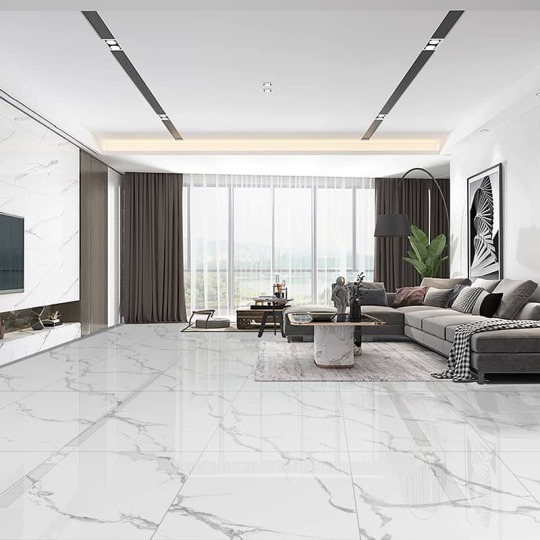
It is developed of clarified clay, with ultrafine sand and feldspar put into the machine. After being kiln blasted at great temperatures and renovated they look like wood, stone, concrete, or materials. This clay-based system makes porcelain tiles a subtype of ceramic tiles.
However, porcelain tile is tough to create, and more strong and more long-lasting than non-porcelain ceramic tiles.
Lioli type ceramic porcelain Tiles Company in India which produce cured and sources great technology provides various choices for floor tiles, slab tiles, and countertop types of porcelain tiles.
Benefits of Porcelain Tile
1. Highly Stain Resistant
Porcelain tile stands up so nicely to moisture that this material is highly stained resistant. When stains receive a texture they get down and set which is what makes them so tough to exclude.
That was the reason that it is very easy to stain untreated wood. Porcelain tiles are thick, they are highly waterproof to most materials and stains won't have the chance to get down and set.
That is why porcelain tile is one of the best tile flooring options for kitchen use because spilled juice, tea, drinks, coffee, and other substances wash at the right time and cleaning is very easy.
2. Lifespan
Some flooring options raise as well over time as the porcelain tile is done. That is why porcelain tile is very difficult to break into a two-piece and it’s extremely tough, which means it is tough to scrape or flake as well.
When users looking for the nicest in the latest types of tile trends, porcelain tile is a nice solid choice for appreciation of the various types of tile flooring choices porcelain tile maybe have the highest lifespan overall.
3. Low Maintenance
Because tiles have highly strong properties, porcelain tiles are easy to maintain. Wash them off daily bases and spruce up the grout in between them and they will remain in decent form throughout the years.
Even if they become broken or harmed they will continue looking proper because they have a uniform color all the way through.
4. Liquid Resistance
When you require a flooring choice that’s going to bear up well to moisture, there are few choices better than porcelain tiles.
The latest tile trends are showing porcelain tiles used more and more often and generally, they are being utilized in damp locations where they can shine as the best option around.
5. Durability
Comprehensive structure exercises help to improve the stability of porcelain tile, preventing cracking and other problems that are more common to ceramic tile from occurring.
If you need to use tile in a commercial atmosphere or a high-traffic area porcelain tile is possibly a very good option.
This highly thick material is greatly tougher to break into pieces and it will resist heavy design over time well. Porcelain tile can be more strong for huge furniture better than ceramic tile can.
At the end of concluding durability, porcelain tile is almost manageable to very easy on over time.
Read More: Top 10 Best Tiles Company In India | Top Tiles Brand In India
Disadvantages of Porcelain Tile
1. Cost of Installation
As porcelain tile is soap difficult, it is also additionally tough to work with, making it more costly and time-consuming to introduce related to softer tiles.
Contractors are not as curious about introducing porcelain tiles because they understand the job is taking off to be tougher.
If you do approve to have these tiles placed in you should instruct to pay very more for the facility. Out of the several tile flooring alternatives, porcelain tile is one of the most valuable and costly to pay for and install.
2. Weight
One of the largest benefits of porcelain tiles is their great thickness and stability can also be a drawback if you are afraid of weight.
That’s because the thicker tile is hardly bigger than ceramic tile and much huger than flooring treatments like wood.
3. Grout
When having tiles put in you will require to have a nice grout established between them and you will have to take steps to protect that grout over time.
This means improving more grout as crucial as rubbing any dirt and grime away that thrives on the grout over time.
Ceramic Tiles

It is created with certain clay with red, white, and brown clay and kiln blasted at a greater temperature but shorter than porcelain tiles to decrease water level quantity, making them less thick, sweeter, and more absorbent.
The clay used in it is small and refined hence it is barely more durable than porcelain tile. Ceramic tile is more inexpensive with various design choices.
Benefits of Ceramic Tiles
1. Unglazed Ceramic
For specific uses, it is feasible to apply with an unglazed ceramic tile that will have a better really feel to it. This is the main benefit over other tile choices that need brightness to work properly.
2. Water Resistance
If you need flooring in a wet climate like a bathroom, toilet, or basement where the water level is high you require something that keeps up nicely with moisture. This type of tile is a great choice in these examples.
3. Design options
Sometimes textures are included in ceramic tiles when they are established, these are one of the greatly different tile flooring alternatives in the market out there.
Users can buy these tiles in simply about any type of color that they prefer and they are sold in complicated structures as well if users are gazing for something more extraordinary.
4. Allergen Concerns
The population that suffers from serious allergies doesn’t like a flooring category that carries hair, dust, and other allergies in places like carpets or regular wood to small significance.
Ceramic tiles are precise for these types of civilizations because they are very simple to improve and they don’t allergen over time.
5. Cost
Whether the price is a large problem for you when browsing through the various tile flooring choices, ceramic tiles maybe look like one of the nicest alternatives for users to apply it.
That’s because this aspect of flooring is very inexpensive compared to different tile materials like porcelain tile.
You will waste broadly less cash on ceramic tile and it will amount to less to be inducted as well.
6. Difficult to Clean
Whenever users thoughts the ceramic tile trends would have they think that ceramic tile is very simple to wash, which does not allow for grout in between the tile.
Grout is very tough to clean dust and users will discover themselves washing it and plugging it often to keep it looking new.
7. Weight
This type of tile flooring is extremely huge and can be an extremely heavy weight to hold up for a portable floor.
Make confident that the floor user can install over is hard sufficient to resist all the strength that the tiles add.
Read More: Vitrified Tiles | Vitrified Floor Tiles | Types of Vitrified Floor Tiles
Comparison of Ceramic Tiles Vs Porcelain Tiles
The following are the key differences between Ceramic Vs Porcelain Tiles,

These tiles have many likenesses a look at the installed properties can sometimes be tough to notify them apart.
These tiles are clay-based and kiln-flamed, but there are rare disparities in components and production techniques and porcelain is technically a very specialized category of ceramic. This suggests one might be a small more beneficial for user projects.
Believing in how user strategies to use the space, you may require to analyze porcelain vs. Ceramic tiles, which is sufficient for your desires.
According to the tile conference of North America, the industry organization that approves whether a tile is used as porcelain tile or ceramic tile, everything is excited to whether the tile can be a set of highly governed water absorption standards.
These ceramic tiles and porcelain tiles generally obtain a textured covering that carries them tough to relate to one another.
Major Difference between Ceramic Tiles Vs Porcelain Tiles
The following are important key points in Ceramic Vs Porcelain Tiles,
1. Easy to Cust Down
Porcelain tiles are thicker and greatly larger than ceramic tiles, which one brings about them difficult to introduce.
Ceramic tiles are limited thicker and more strong and outstanding than porcelain tiles. It is also easy to cut manually with a clasp tile cutter.
2. Colors & Elegance
Porcelain tiles have a broad range of techniques available Users can find various aspects like marble, granite, limestone, etc.
Ceramic tiles are extra flexible and simple to develop a skillful design. It is available in realistic color and can be published in an impressive look on stones and hardwood.
3. Maintenance
Porcelain tiles look enormously difficult and simple to retain and also stay in pattern for years. Ceramic tiles are incredibly difficult and difficult to break down, simple to strengthen and take maintenance off, and simple to clean by washing.
4. Durability
Porcelain tile has greatly thick equipment, it is greatly harder and can good against large use over time than ceramic tile, it is better strong and limited prone to wash away.
Ceramic tiles are not as strong as porcelain tiles, it is limited and tough and can be better versatile. It is promising to prevent large traffic areas.
5. Cost
Porcelain tiles are more costly, which you have to believe about particularly if your budget is short. It starts at $3 to$33 per sq/ft.
It is also extra risky to repair. Ceramic tiles are cheap and available for everyone’s allowance. It starts at $0.5 to $33 per sq/ft.
6. Perspective
Porcelain tile is proficient to produce to approximate various materials. While ceramic tiles are usable they are extremely promising at simulating biological stones such as marble or even wood fibers.
While ceramic tile is not organized as strong color and simulation of wood particles or simple stone is not popular with basic ceramic tile
7. Heat & Water Resistance
Porcelain tile is thicker, more enormous, and more impenetrable to water and is a promising option than ceramic tile for outside areas.
Ceramic tile is relatively more sensitive to moisture infiltration though the disparities are least if the tile is varnished and in a nice situation, the face will withstand water.
8. Care & Cleaning
Porcelain tile is simple to tidy up by damp washing with a soft water soap treatment. While ceramic tile has similar maintenance and clearing requirements as ceramic tile ritual damp washing and interval sealing of grout seams.
9. Installation
Porcelain tile is barely weaker and may need the skilled hand of an experienced tile setter to chop it down suitably.
While ceramic tile is limited thick than porcelain tile and thus slightly strong it is also a far easier material for do-it-yourself homeowners to cut manually. That’s why ceramic tile is barely simpler to introduce.
10. Lifespan
Porcelain tile is a harder entity and rubs nicer than ceramic tile but its hardness can also make it additionally susceptible to breaking down under structural activity in a building.
Ceramic tile floors can stand last from 75-100 years if the grout is daily protected appropriately and plugged regularly.
Read More: Stone Flooring | Top 5 Types of Stone Flooring | Natural Stone Flooring
Uses of Tiles
- High foot traffic locations
- Use on walls it's depending on the weight
- Houses Exterior and interior bosideside
- Rooms with very high vapor levels such as bathrooms, toilet
- For building Floors
- Commercial areas- like hotels, restaurants, and retail outlets.
Ceramic Tiles
- For Home interiors design
- Low foot traffic locations
- Floors & walls
- Only for Interiors
- Commercial building interior walls
FAQs
What do you mean by Porcelain Tiles?It is developed of clarified clay, with ultrafine sand and feldspar put into the machine. After being kiln blasted at great temperatures and renovated they look like wood, stone, concrete, or materials. This clay-based system makes porcelain tiles a subtype of ceramic tiles. What are the Benefits of Porcelain Tile?1. Highly Stain Resistant
2. Lifespan
3. Low Maintenance
4. Liquid Resistance
5. DurabilitWhat are the Uses of Tiles?High foot traffic locations
Use on walls it's depending on the weight
Houses Exterior and interior bosideside
Rooms with very high vapor levels such as bathrooms, toilet
For building Floors
Commercial areas- like hotels, restaurants, and retail outlets.
You May Also Like
- Top 10 Best Tiles Company In India | Top Tiles Brand In India
- 28 Tiling Tools Used In Flooring Work | Tools for Tiling | Tools For Tile Work
- Stone Flooring | Top 5 Types of Stone Flooring | Natural Stone Flooring | Stone Floor Tiles | Slate Flooring
- What Is a Mud Flooring? How to Prepare Mud Floor, Advantages & Disadvantages
- What Is Flooring | 10 Types of Flooring | Best Flooring for House In India
Read the full article
#CeramicTilesVsPorcelainTiles#ceramicvsporcelain#ceramicvsporcelaintilesforshower#differencebetweenporcelainandceramic#porcelainvsceramictile#tilesporcelainorceramic#whatisdifferencebetweenceramicandporcelaintile#whatisdifferencebetweenporcelainandceramic#whatthedifferencebetweenporcelainandceramictiles#what'sthedifferencebetweenceramicandporcelaintiles#what'sthedifferencebetweenporcelainandceramictiles#whatsthedifferencebetweenporcelainandceramic
0 notes